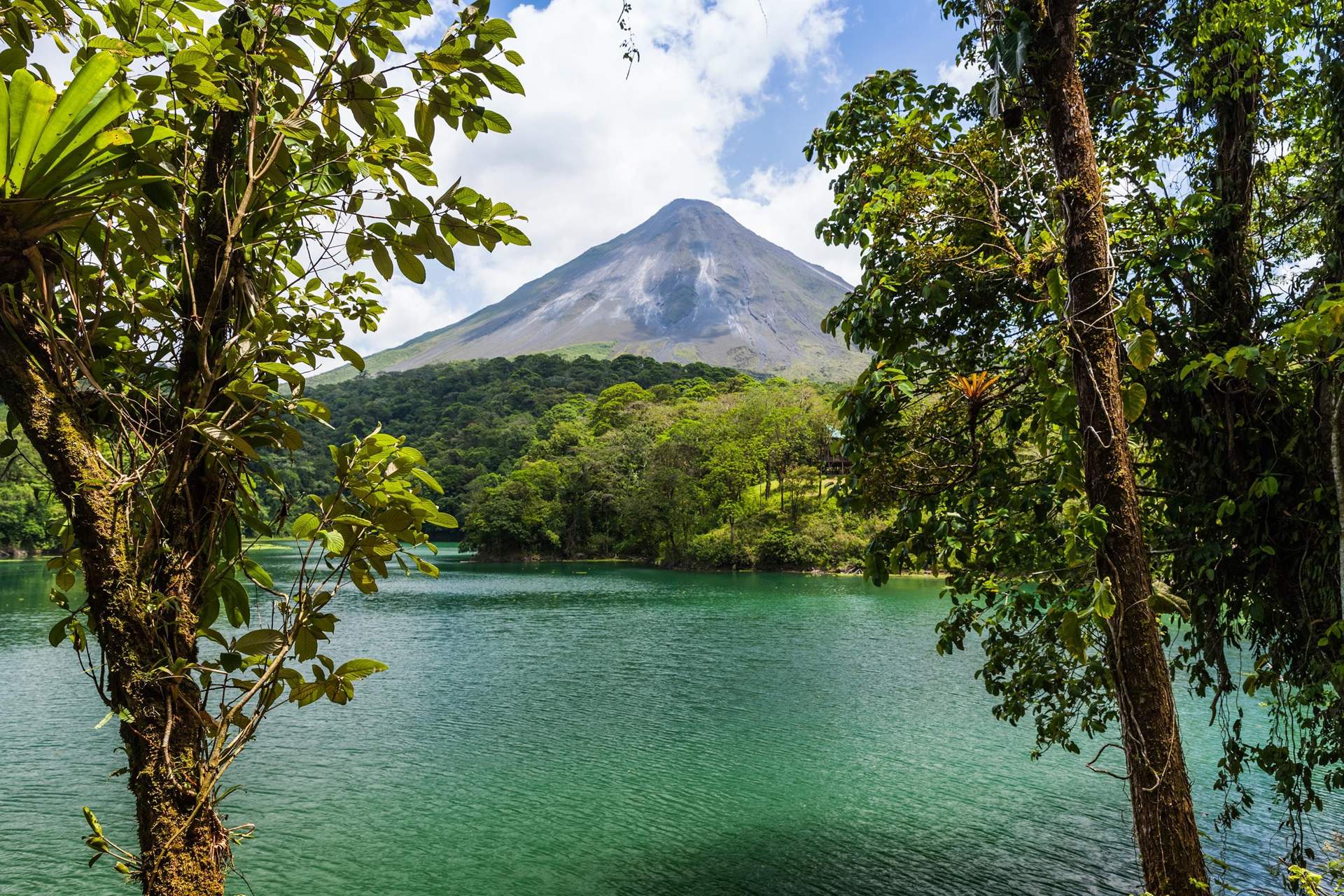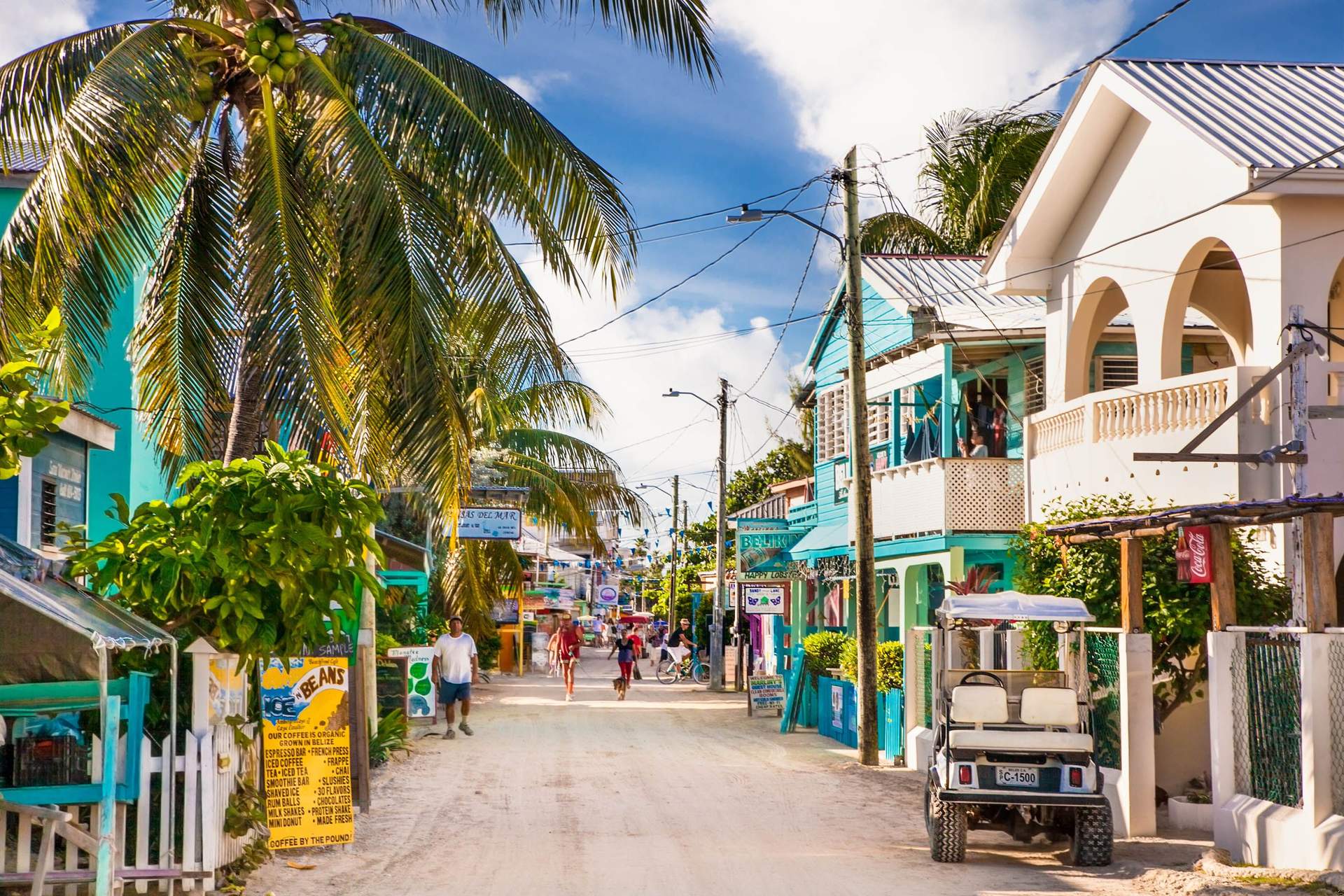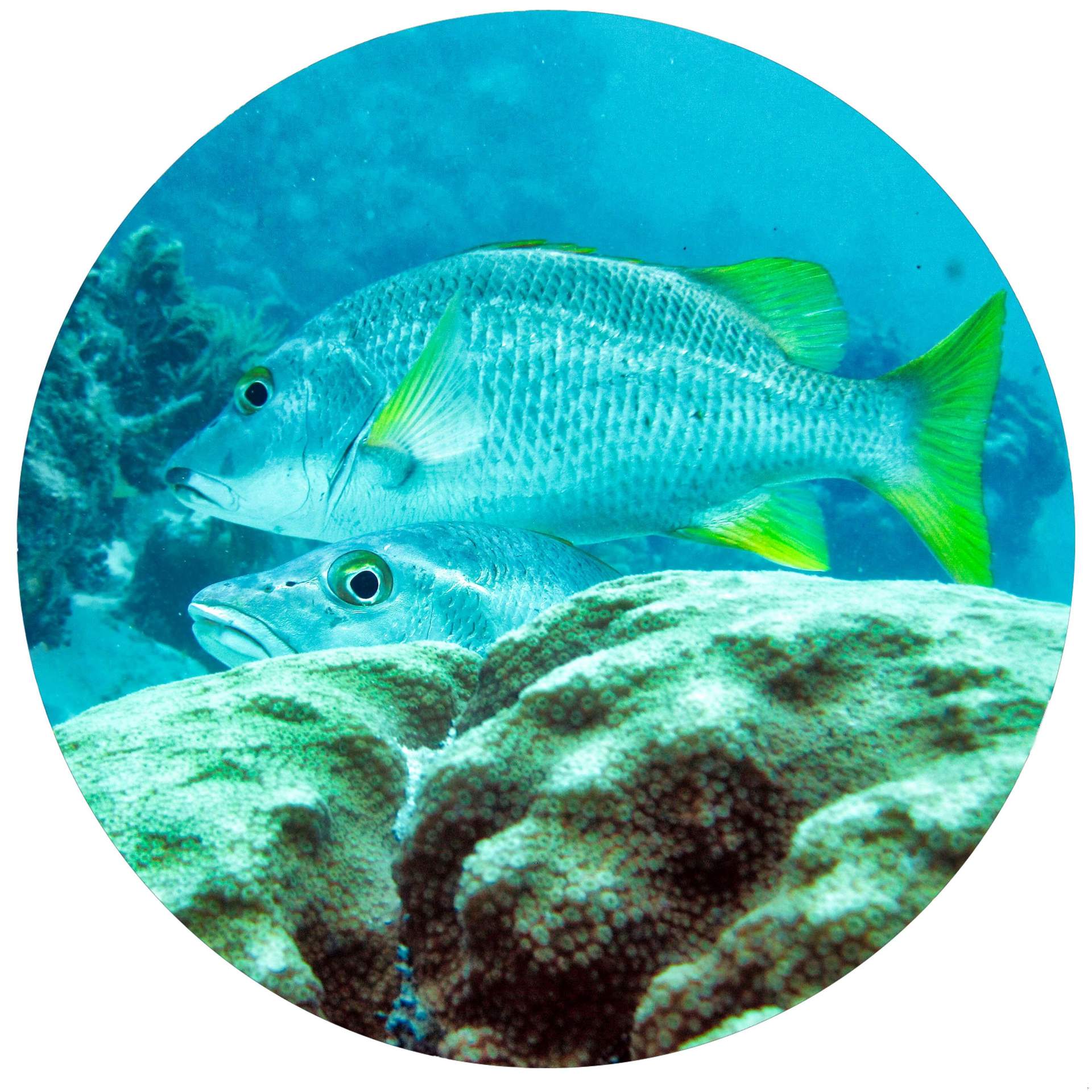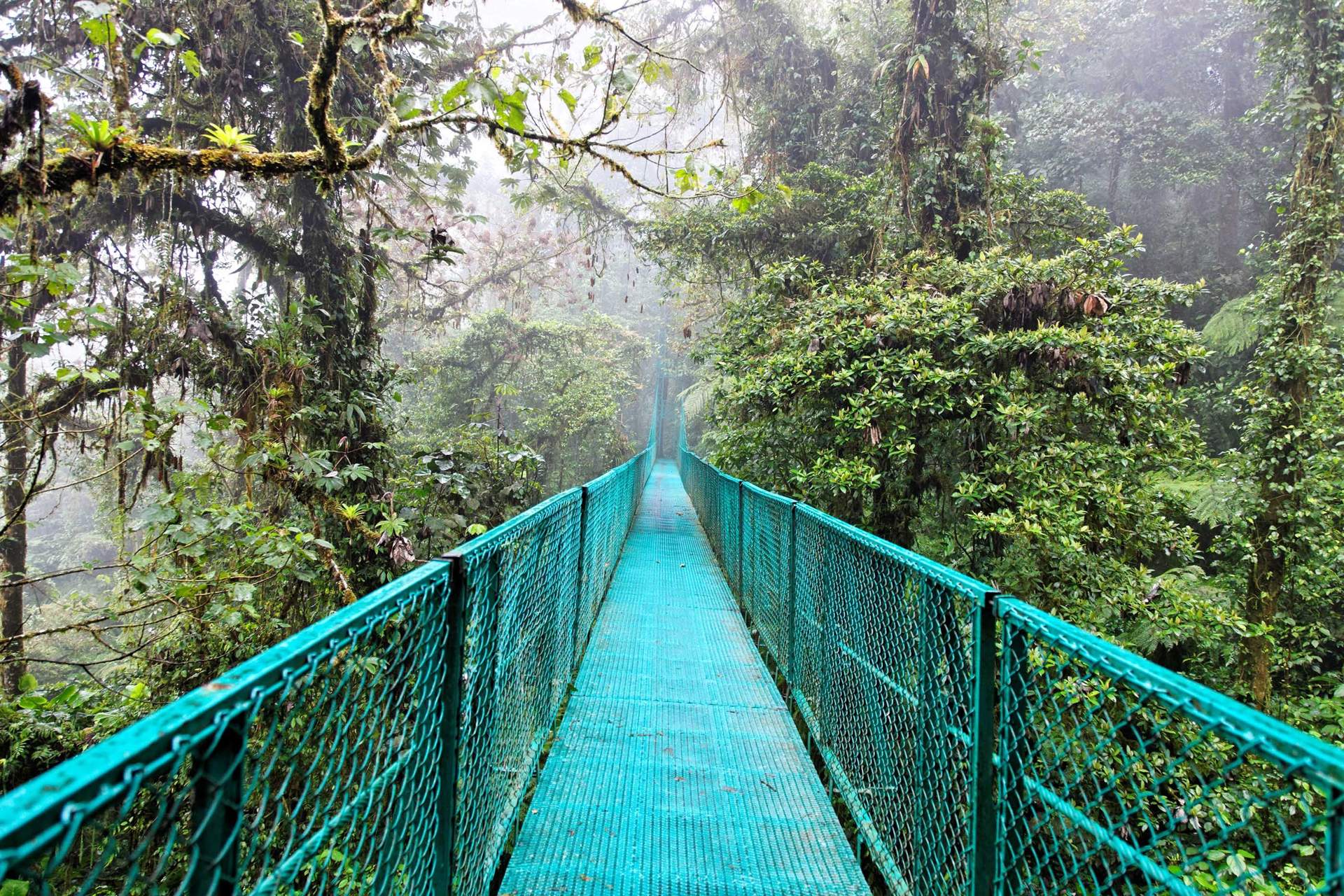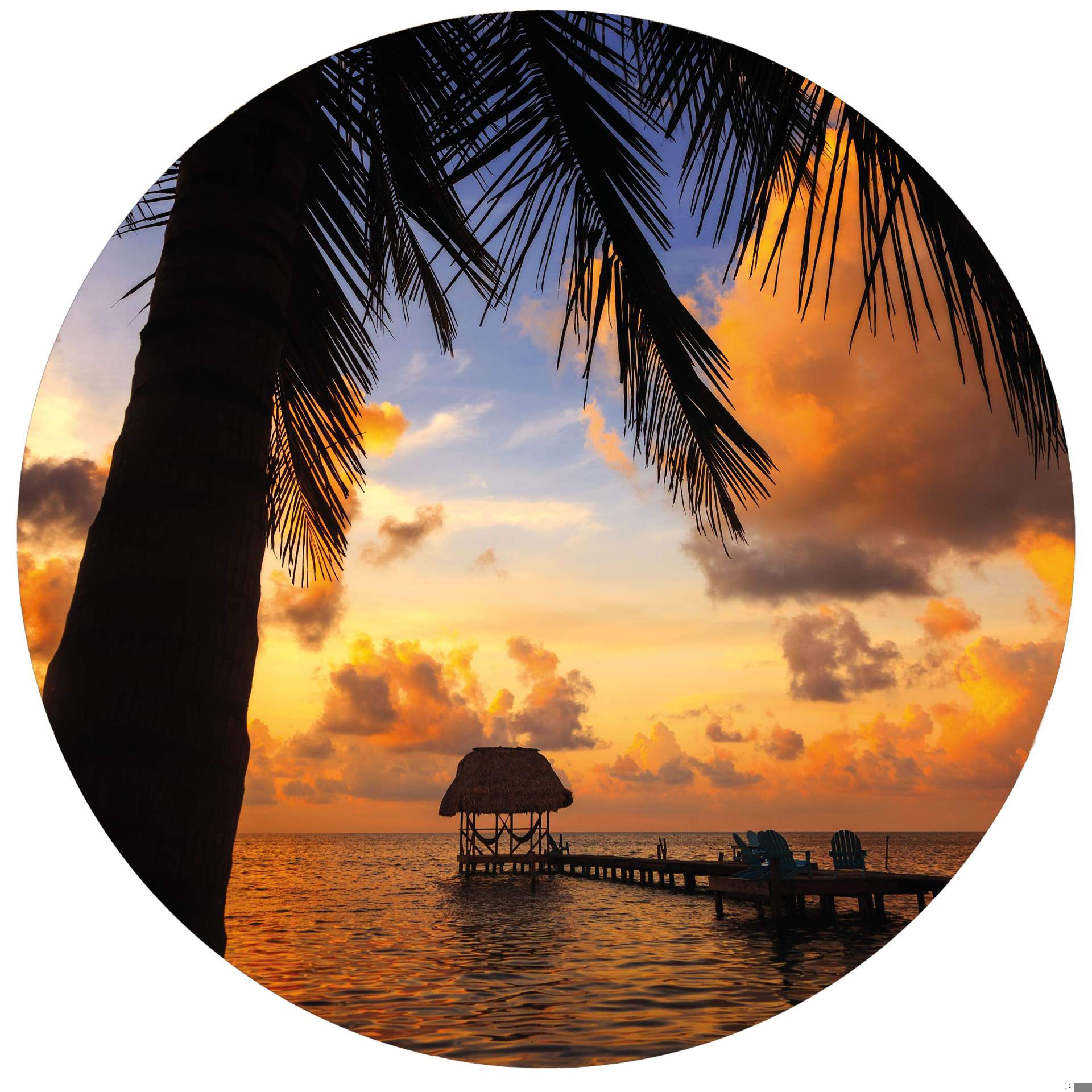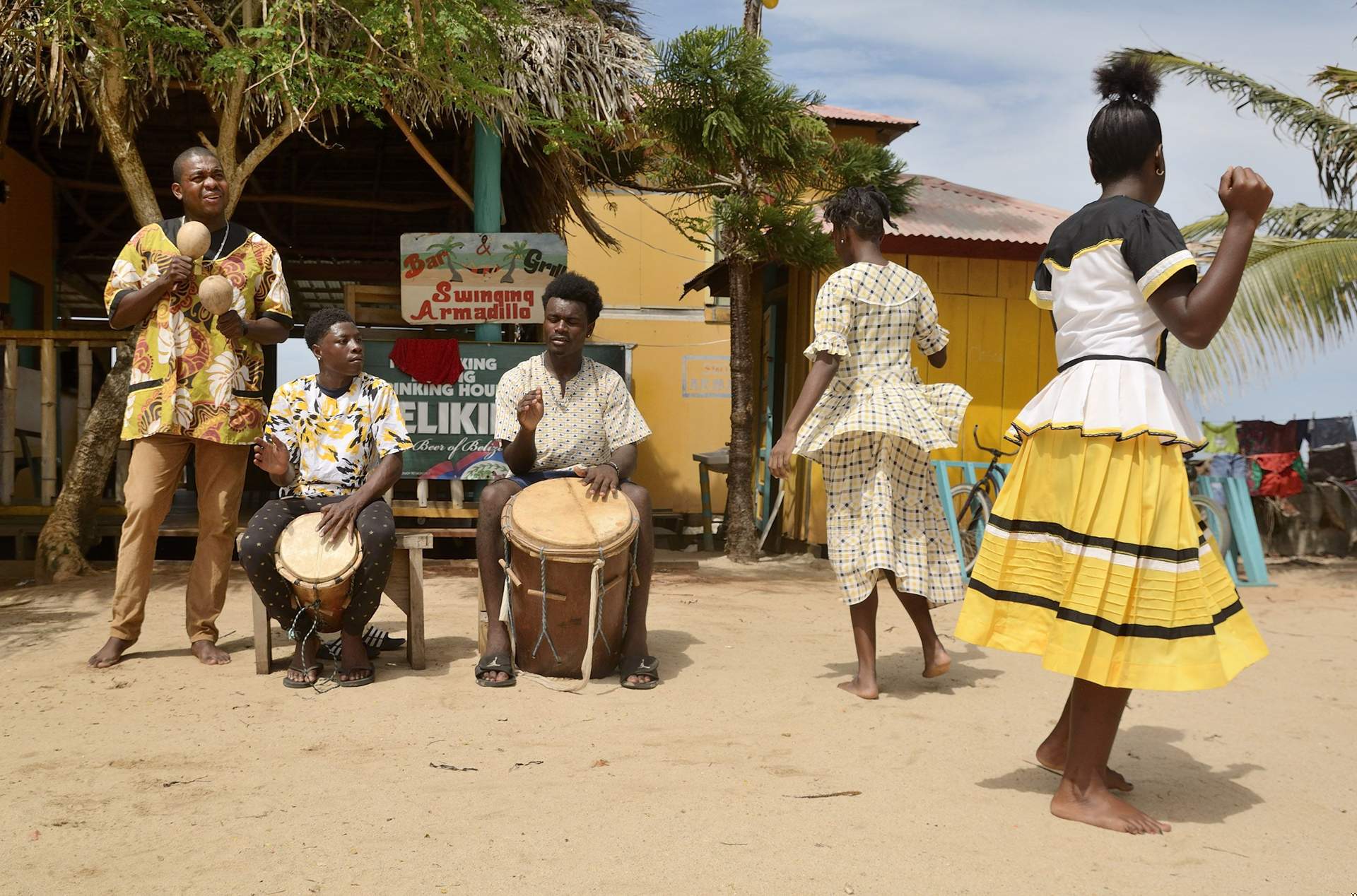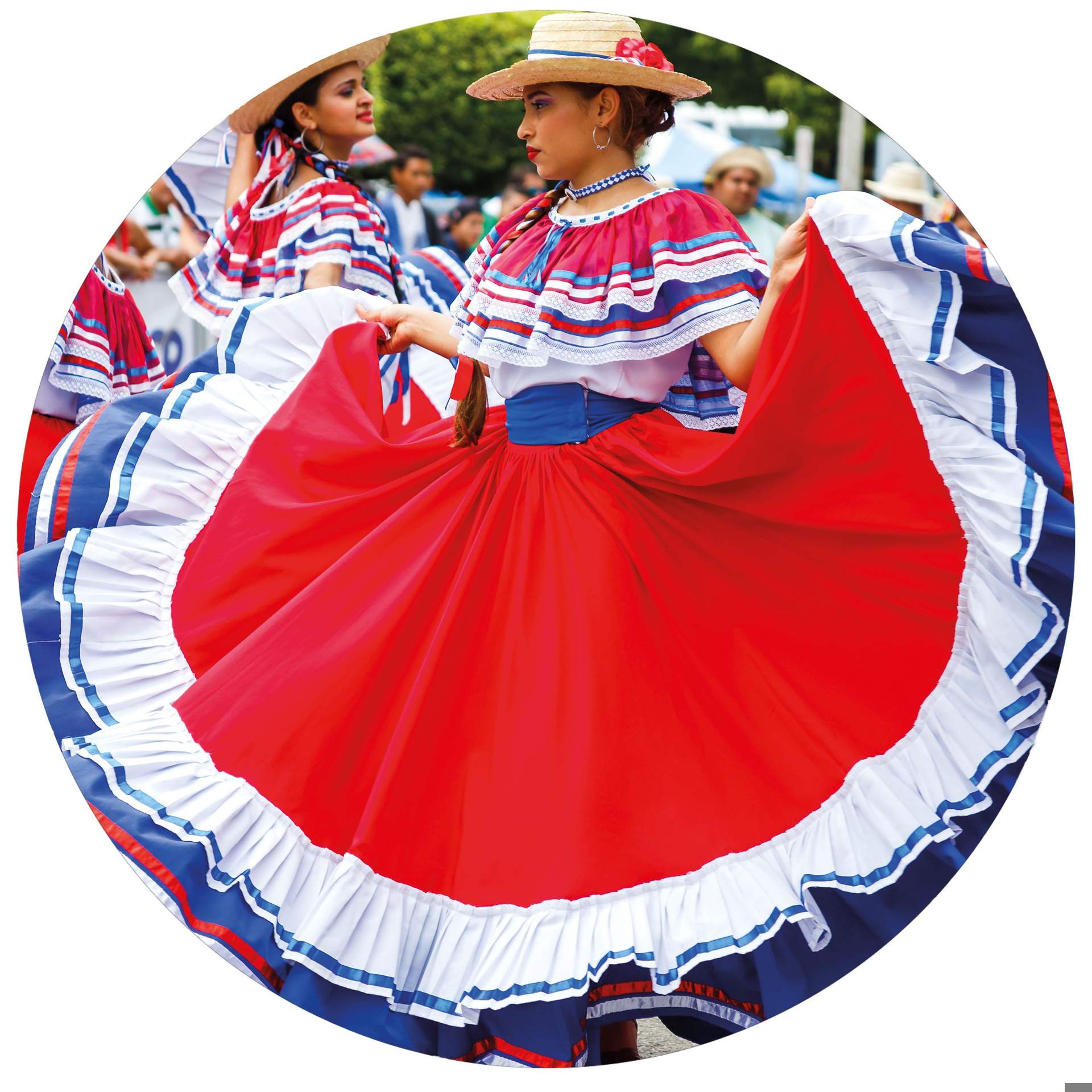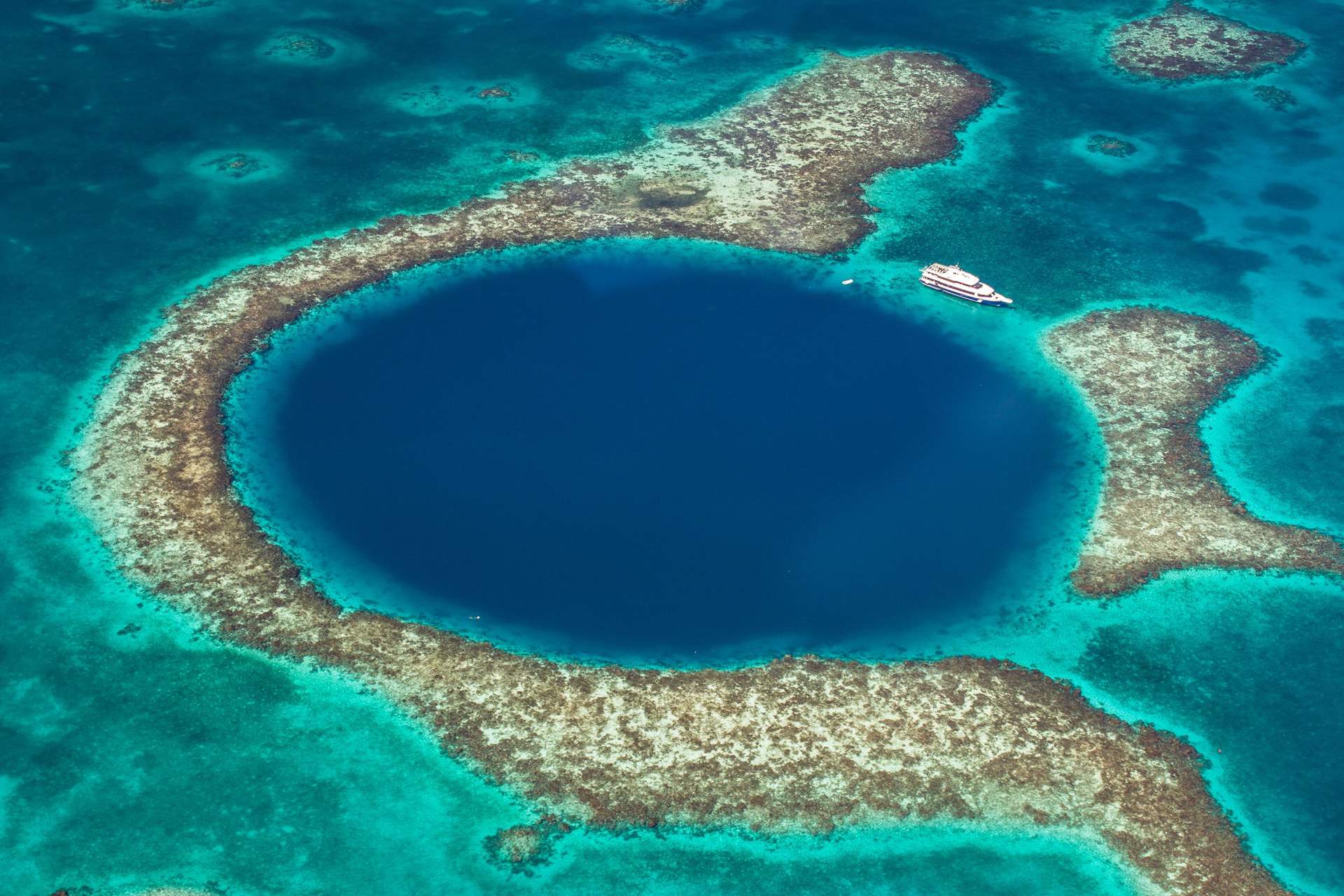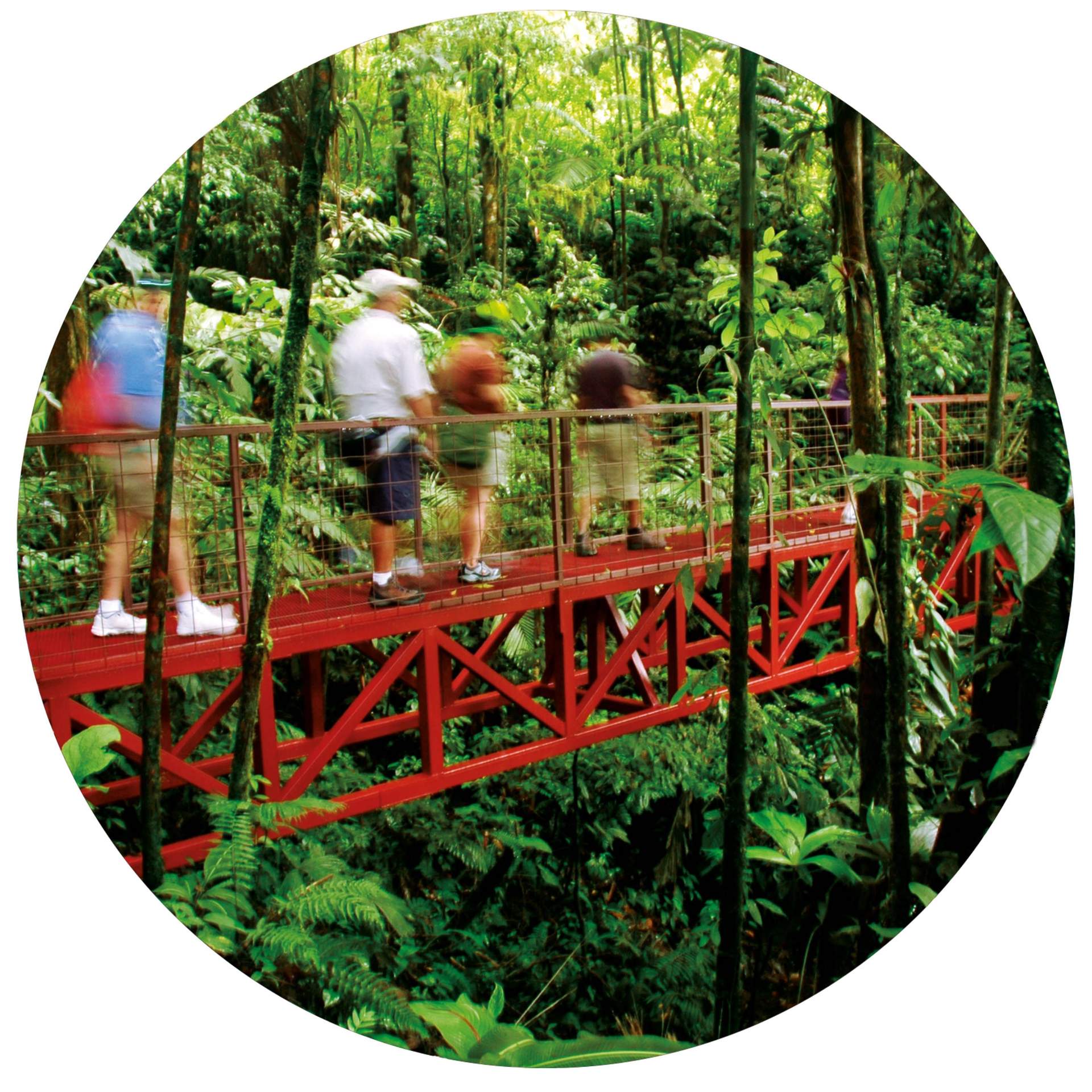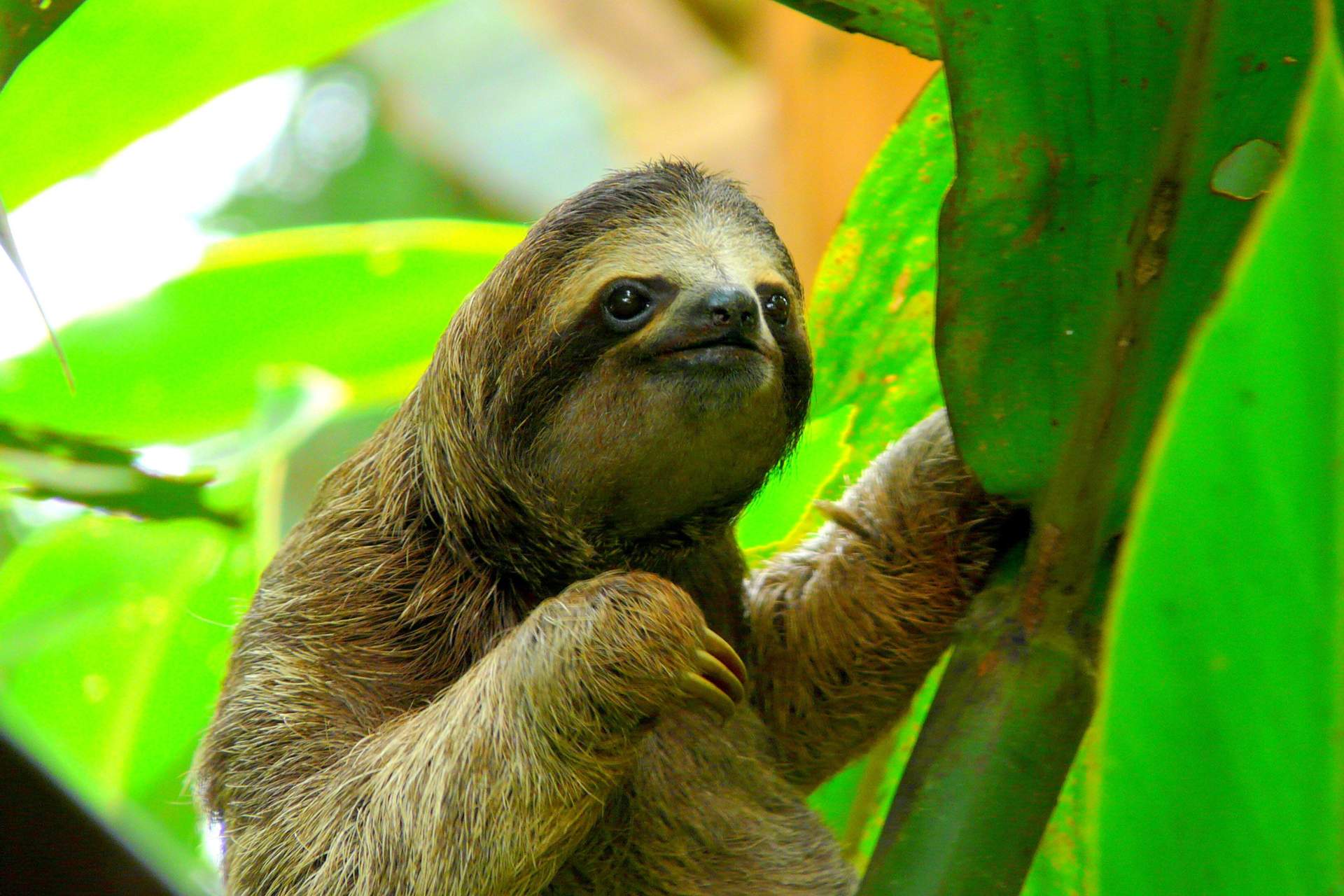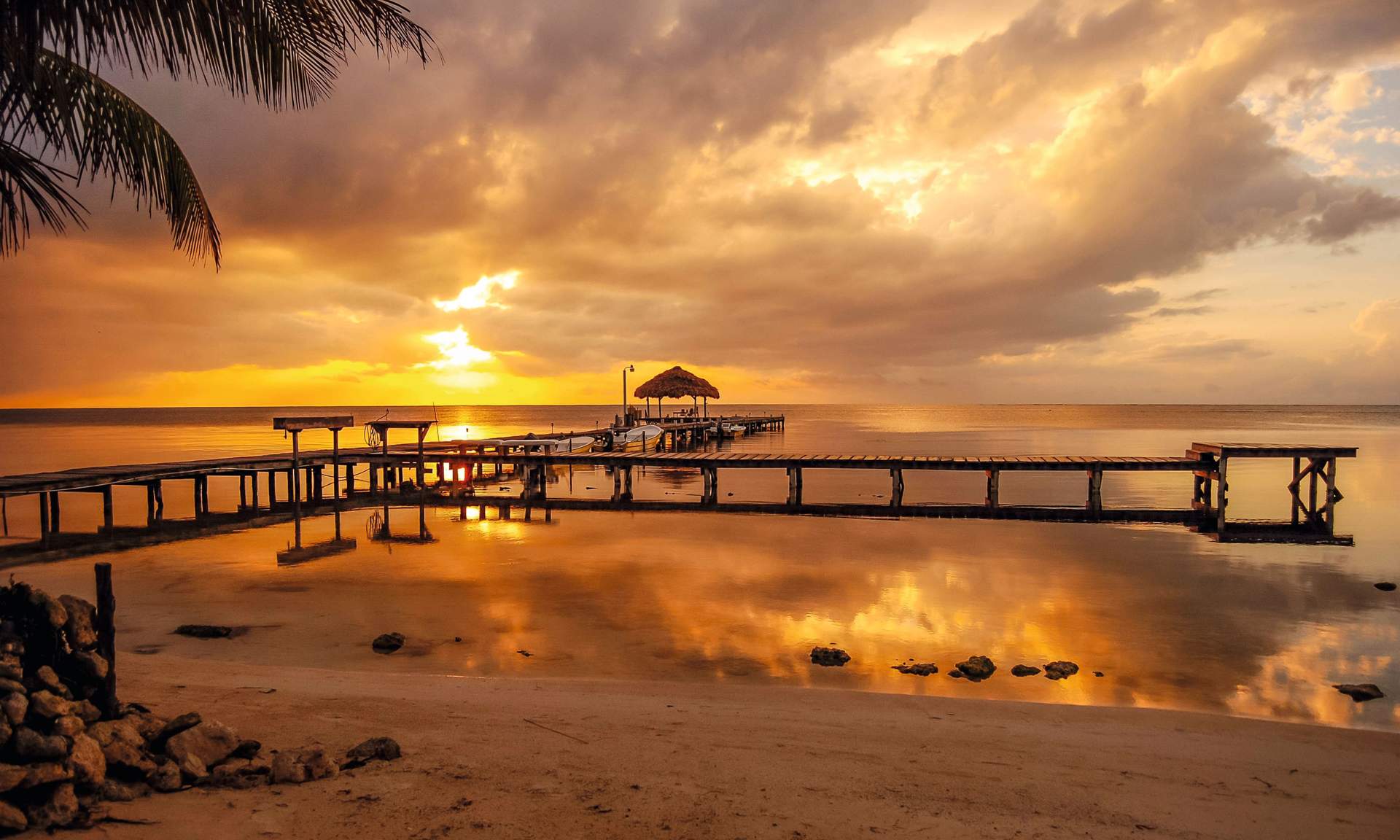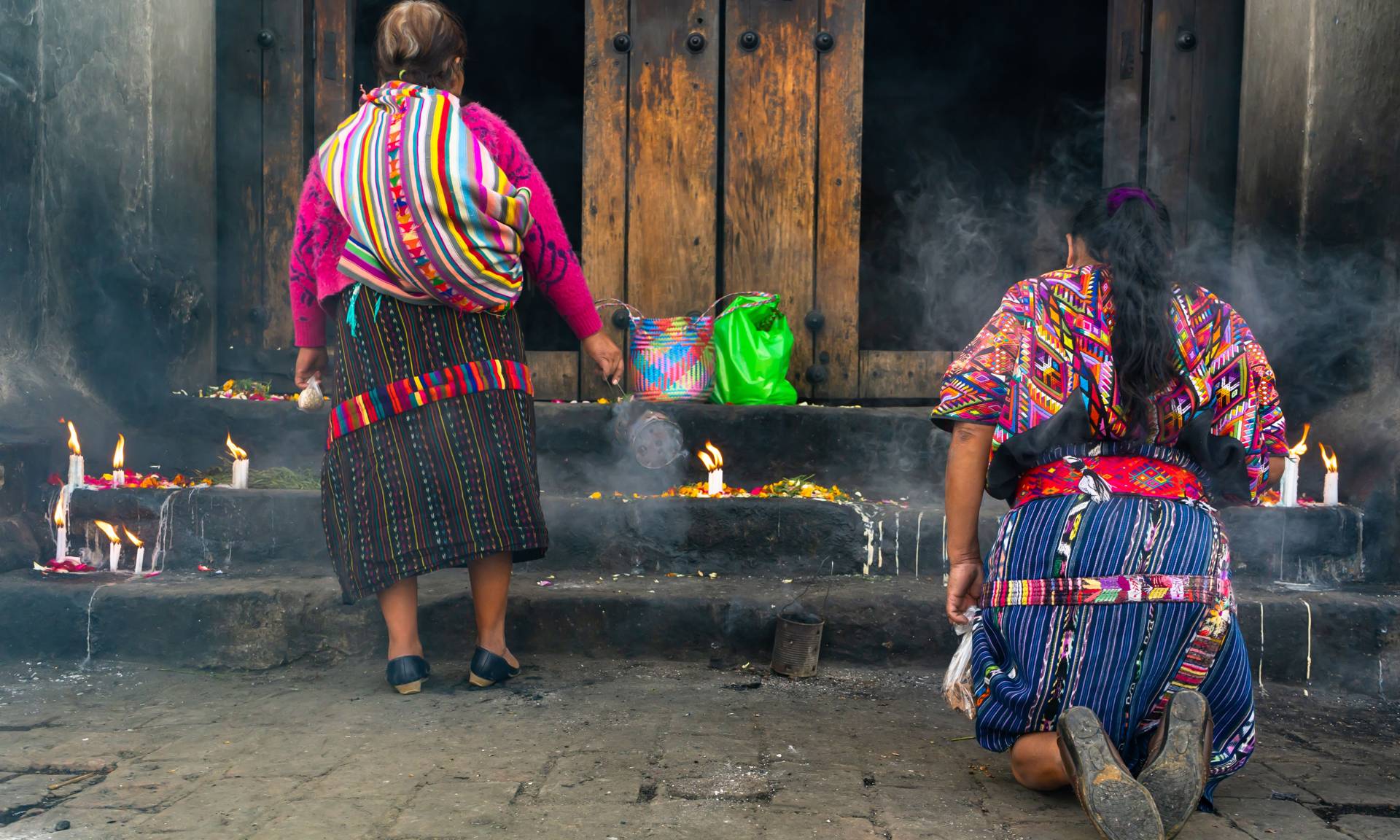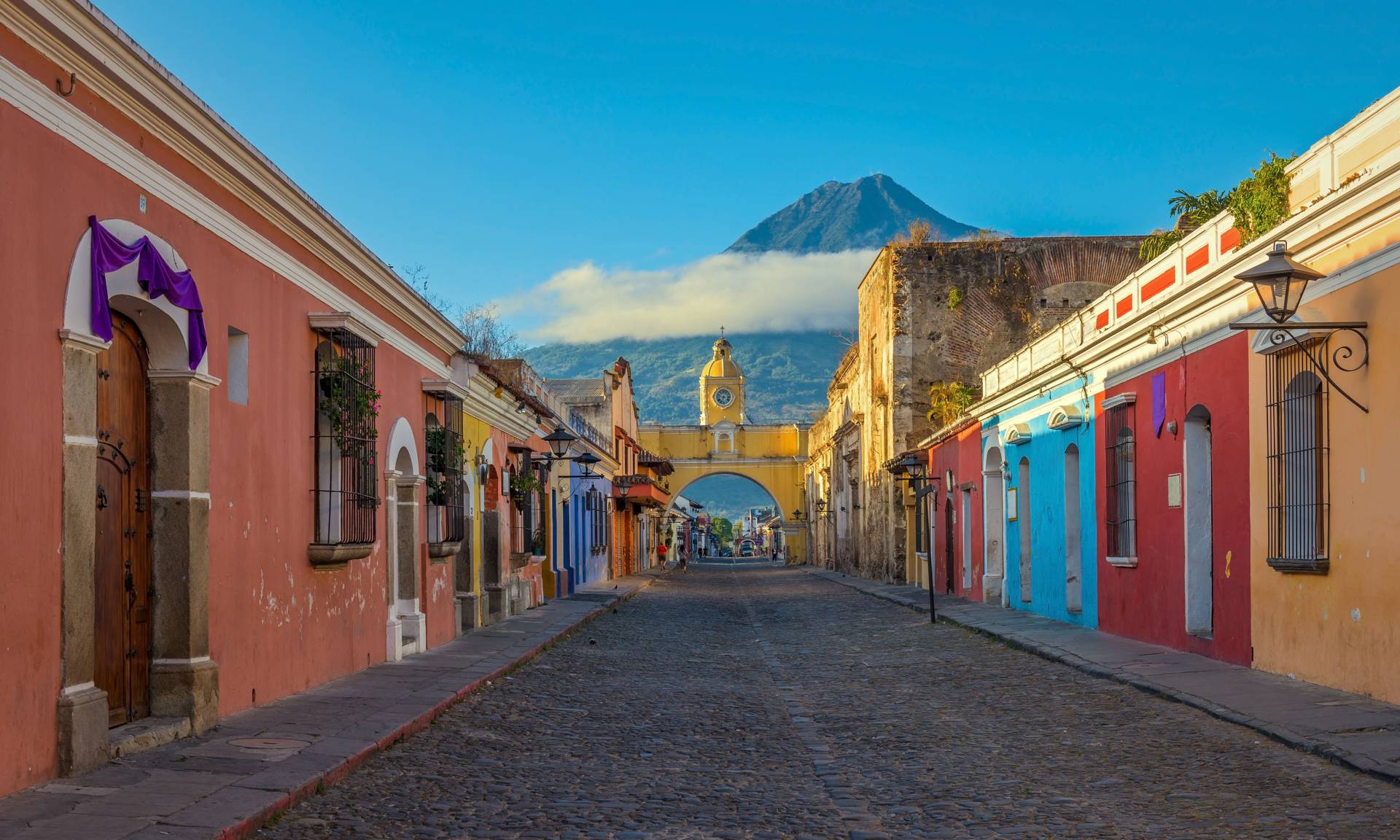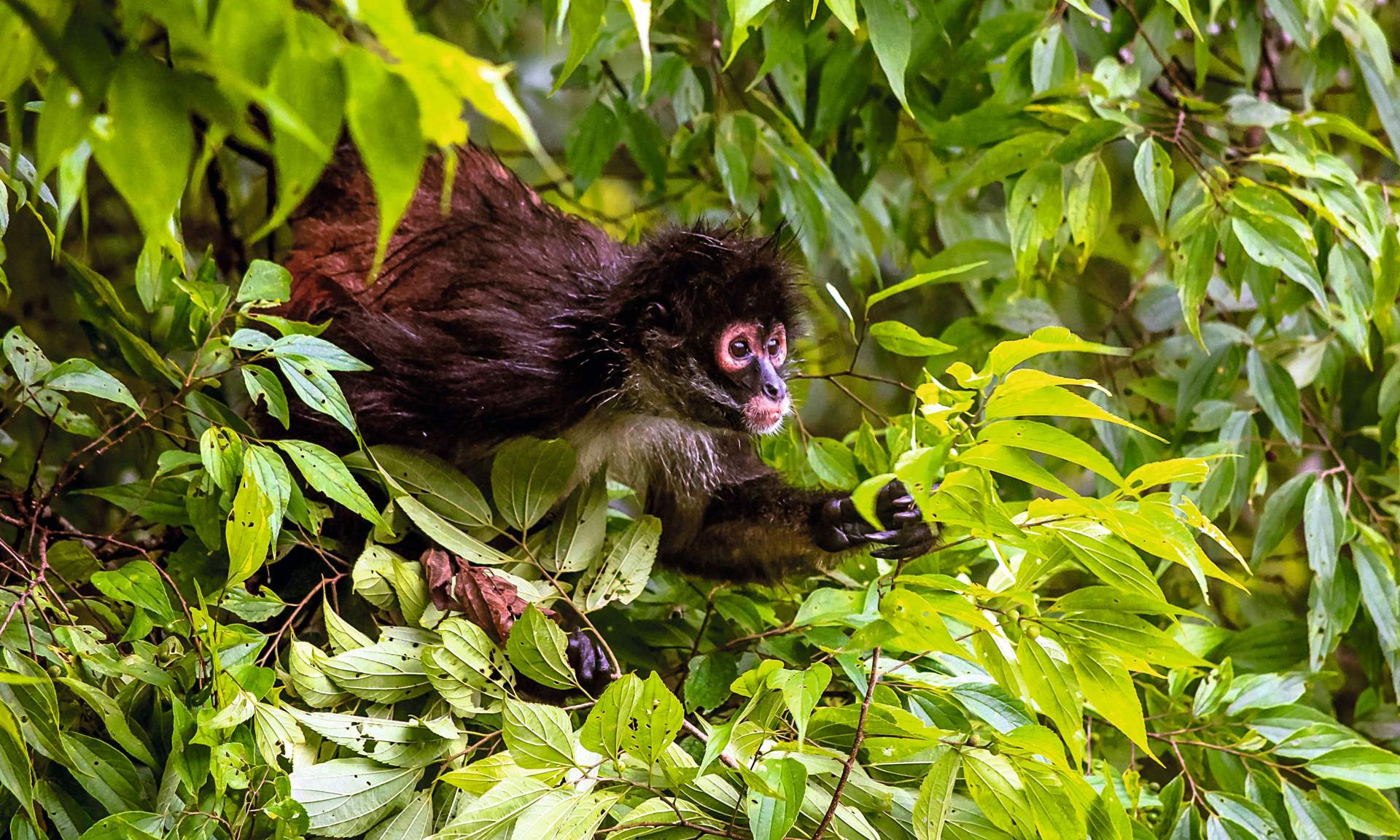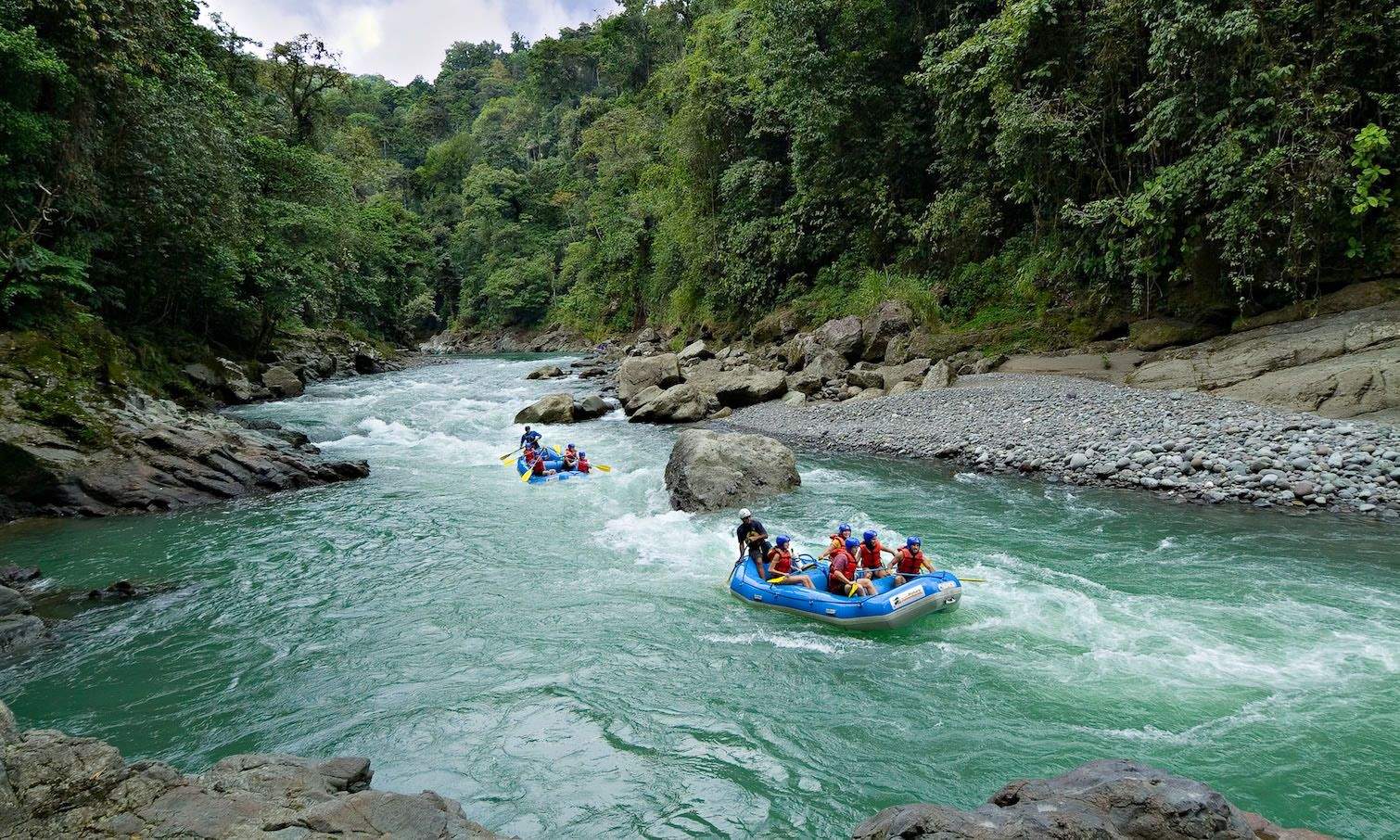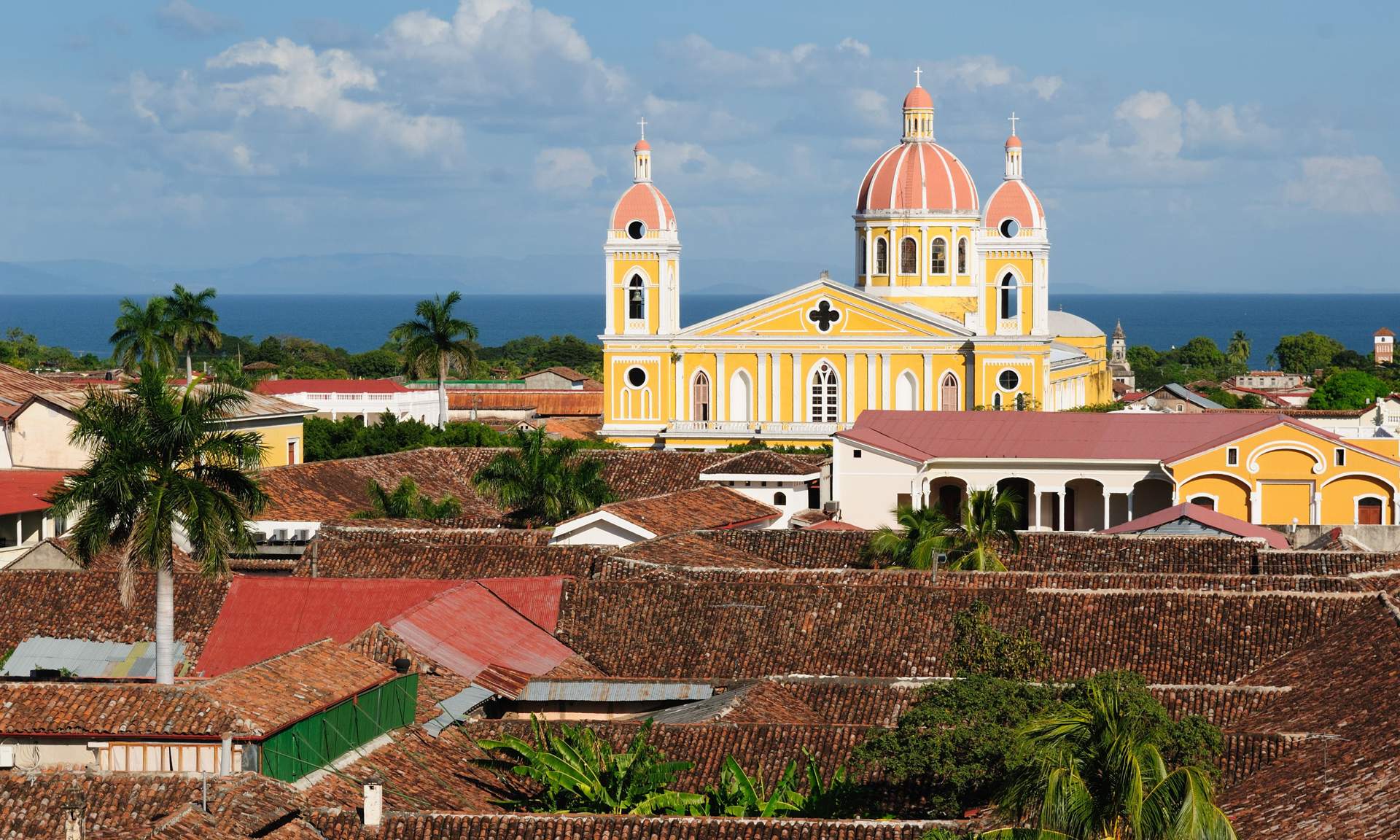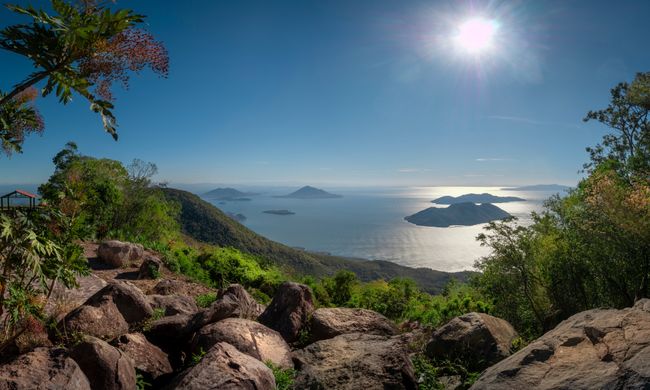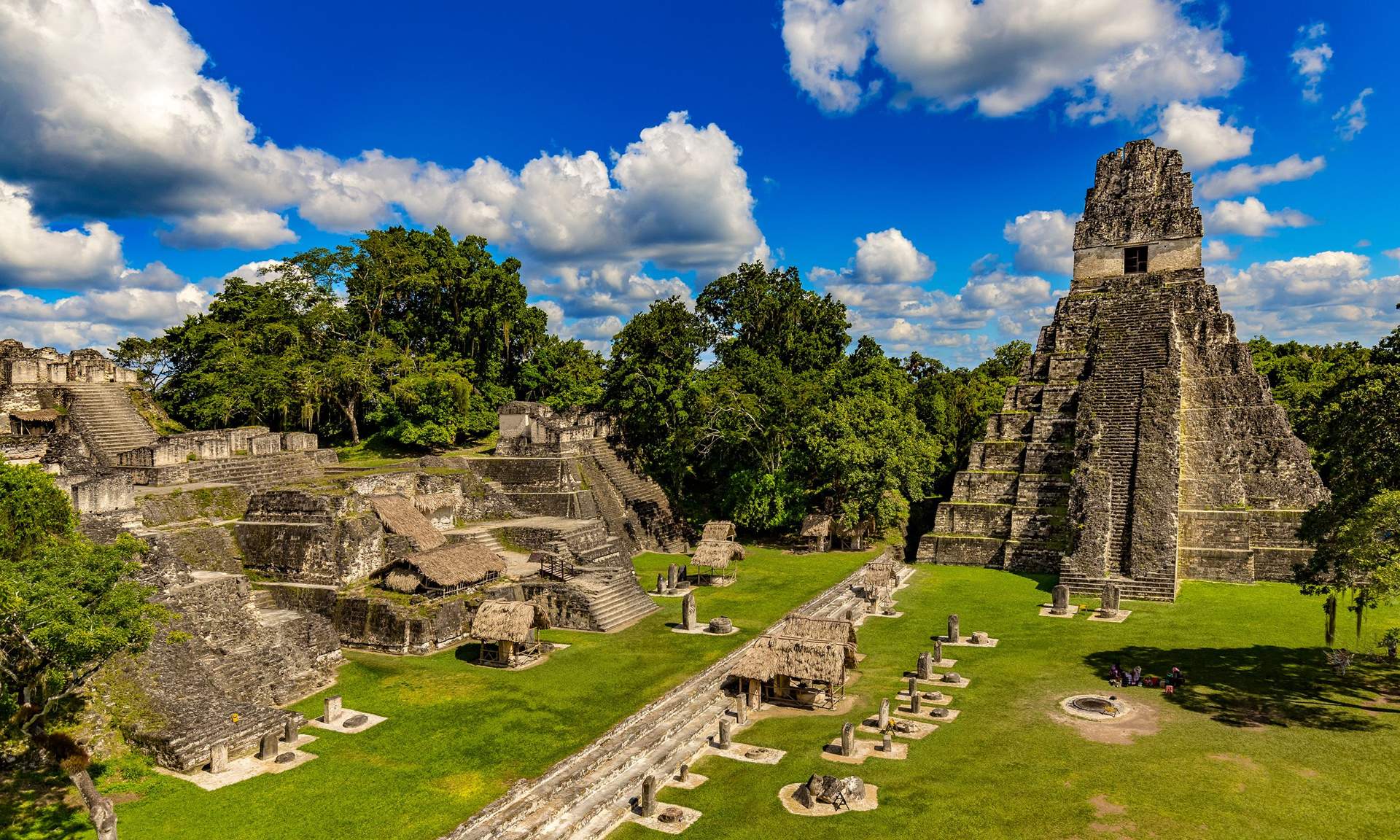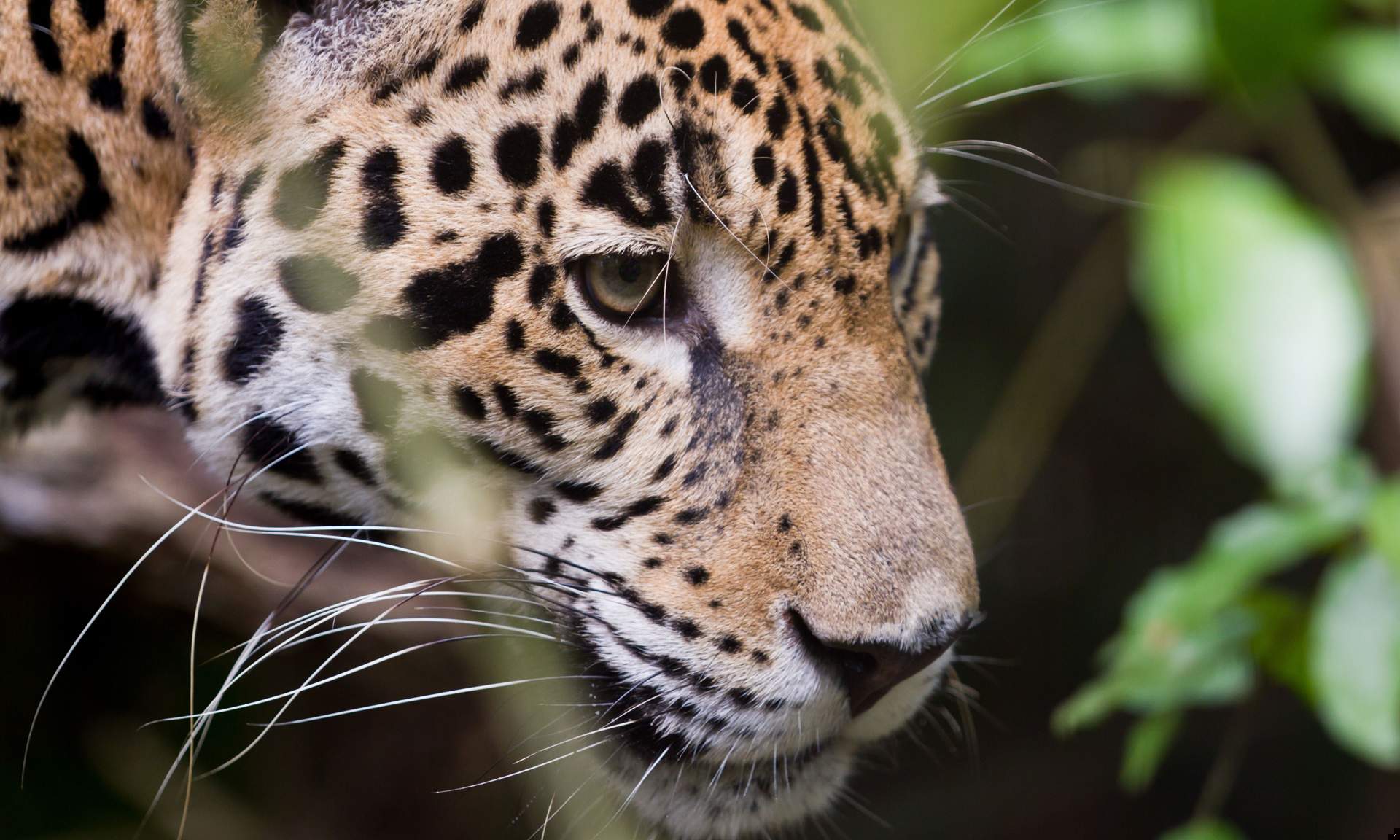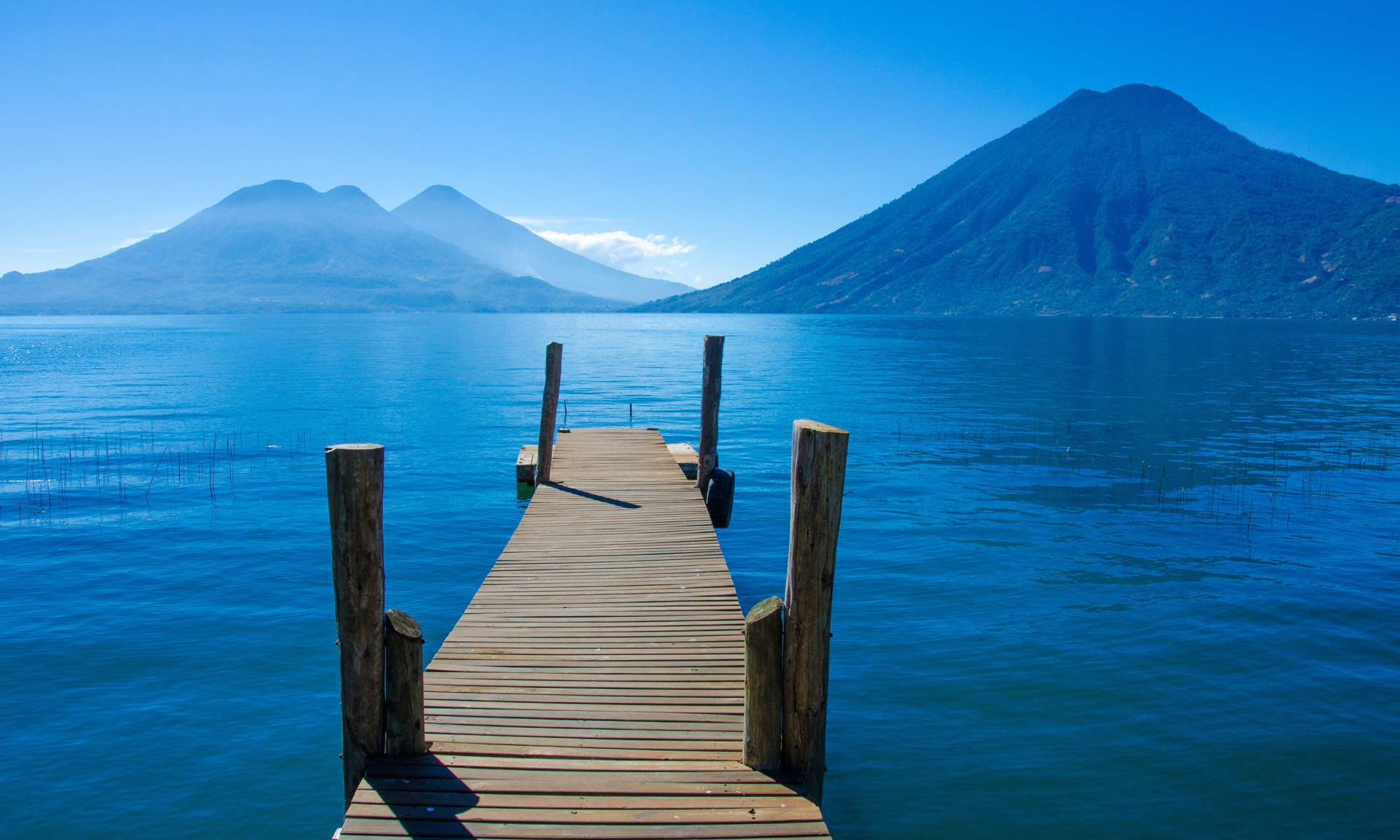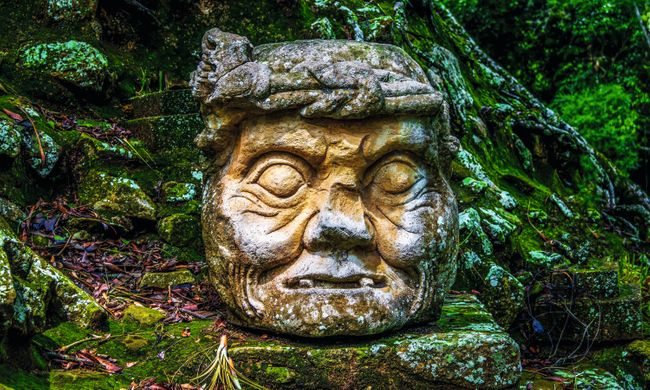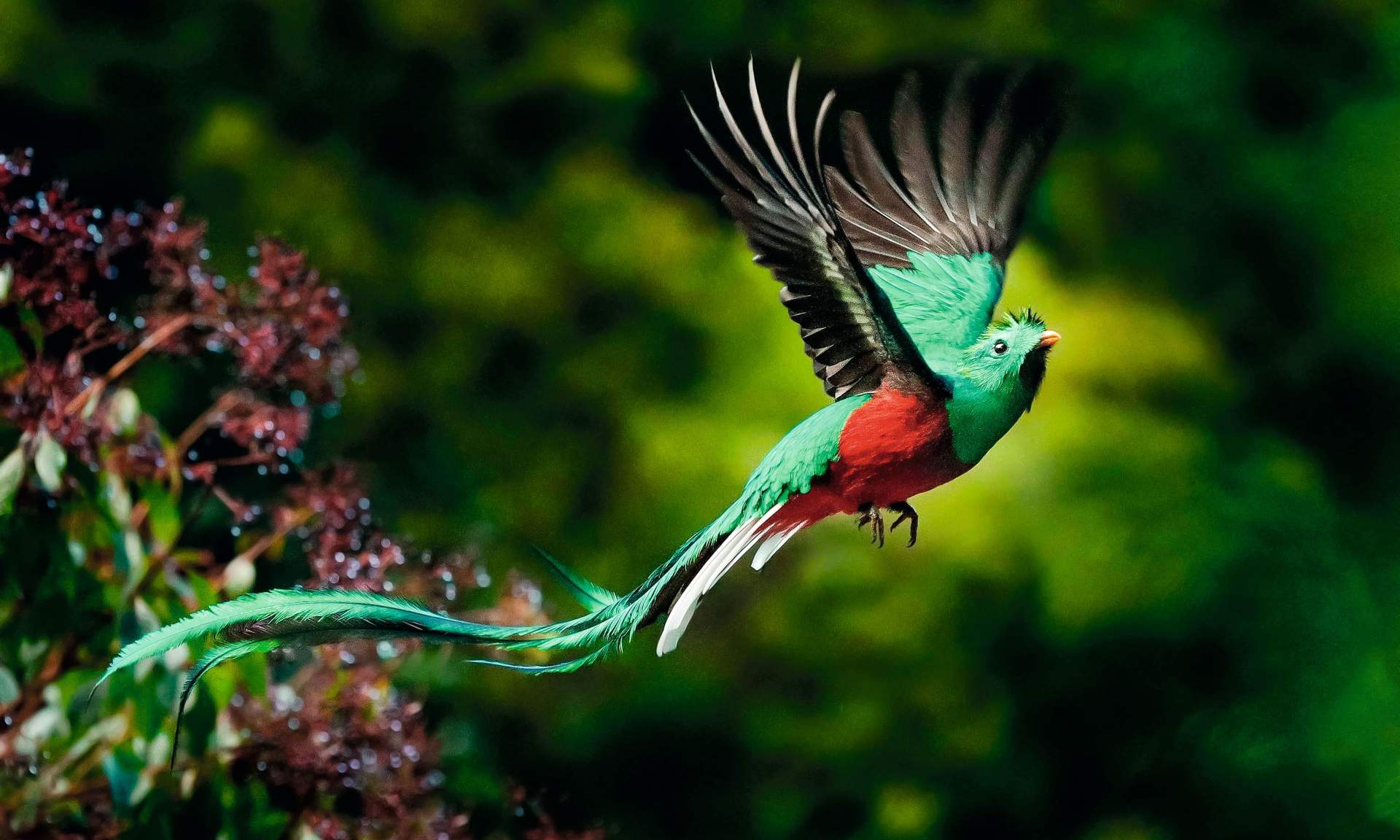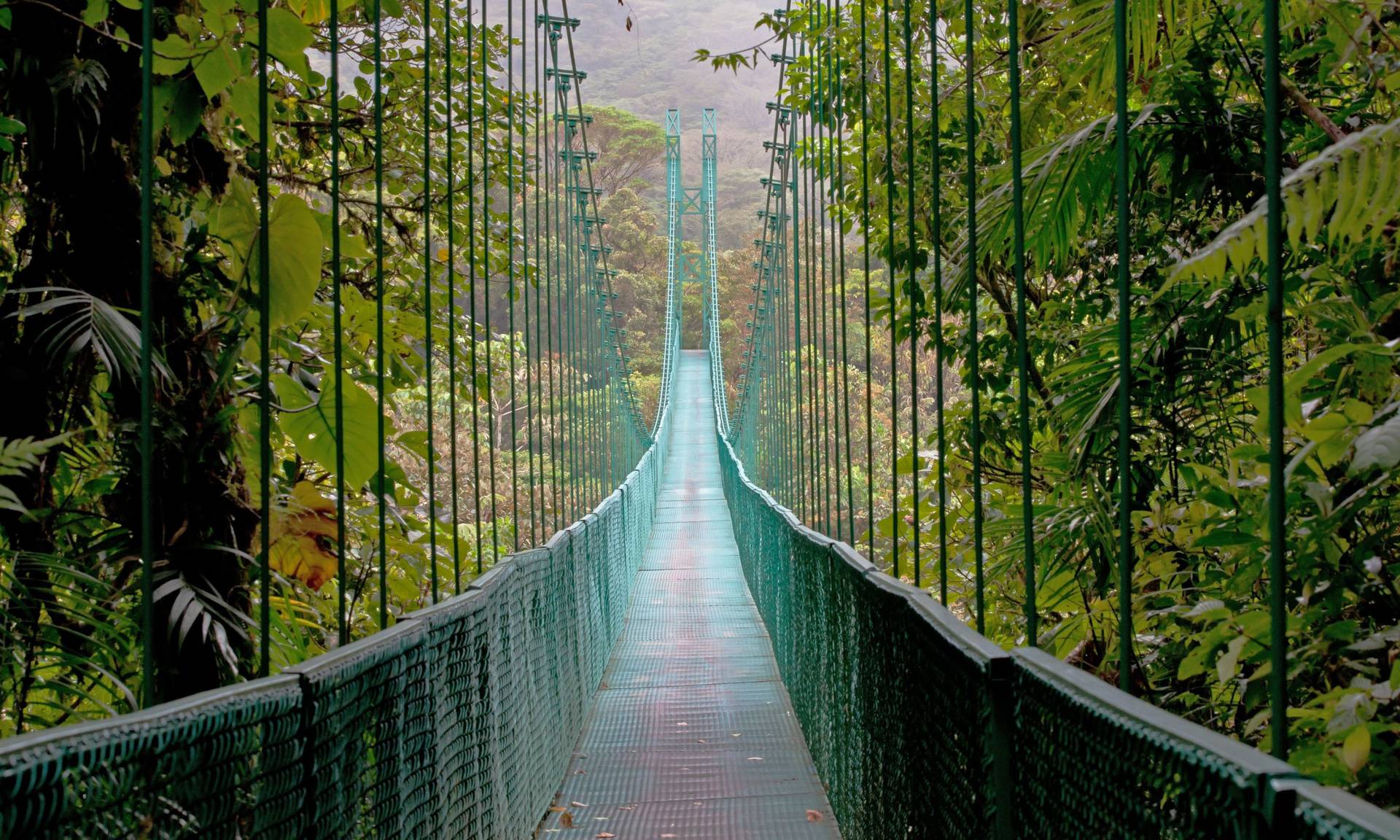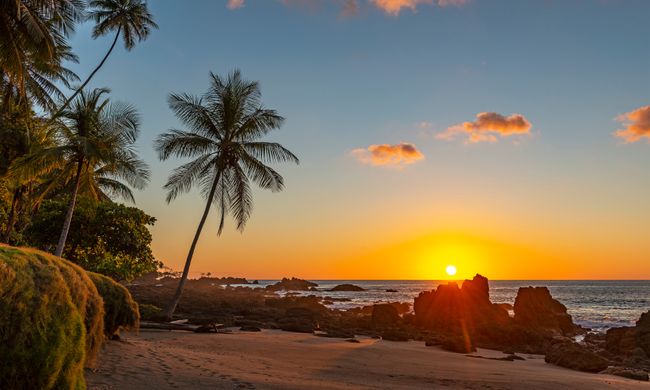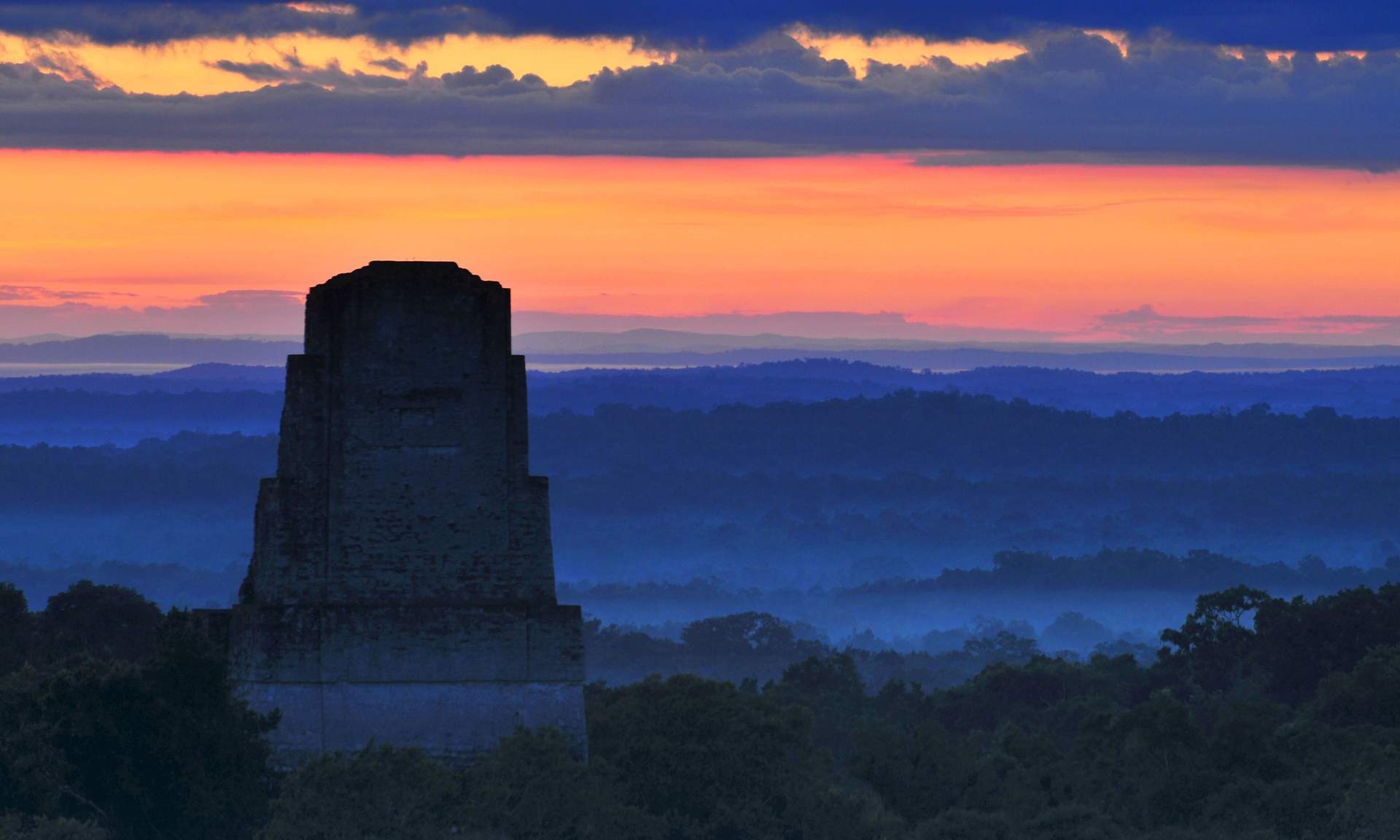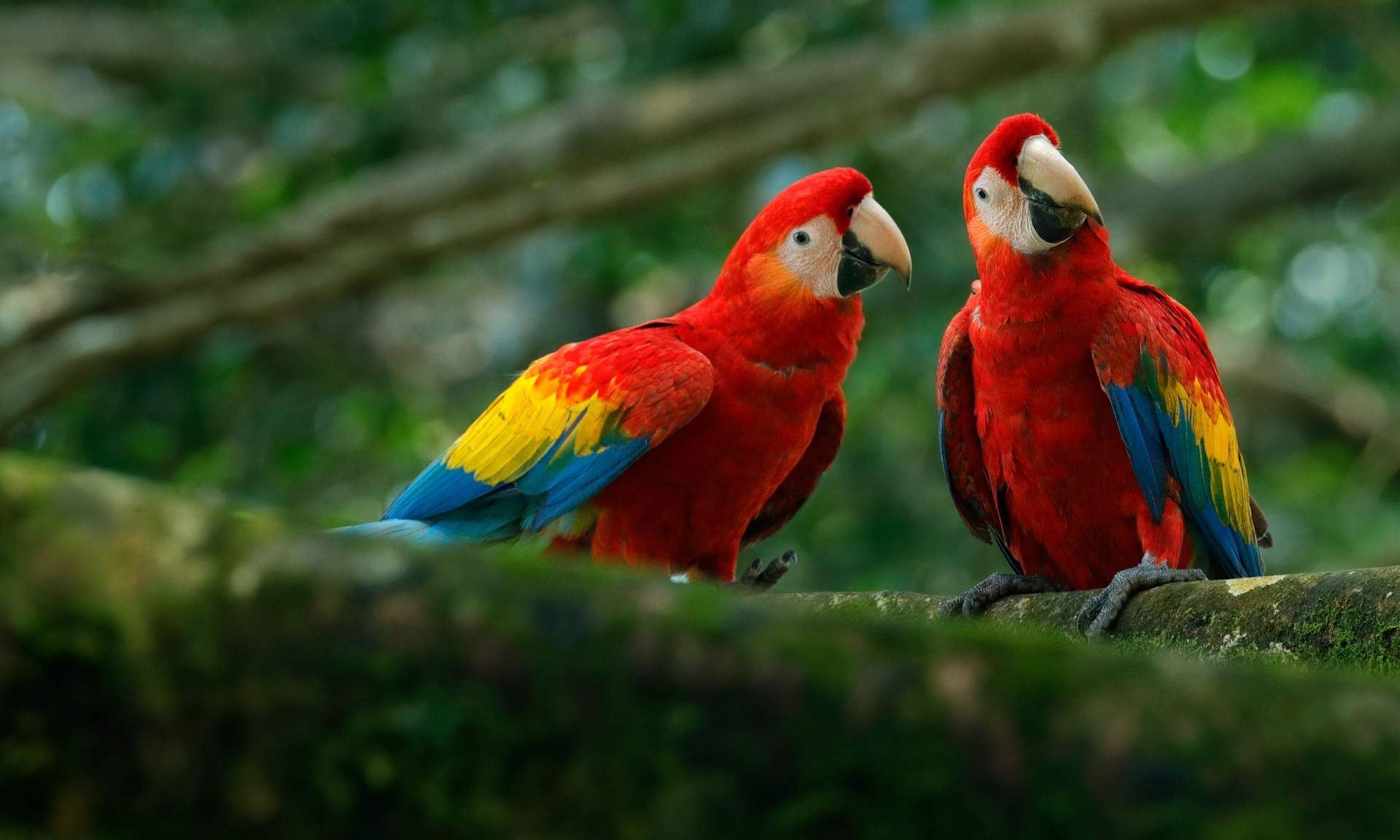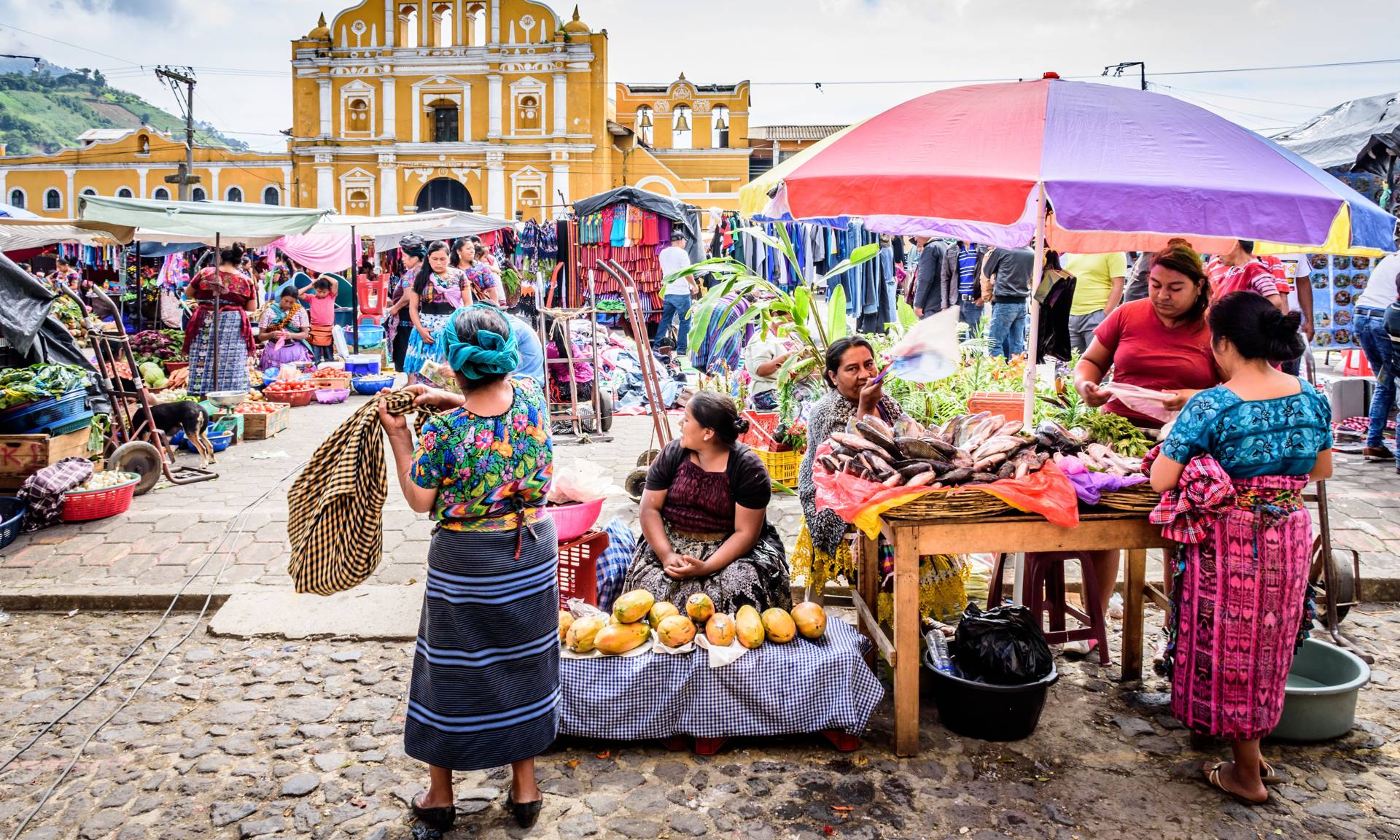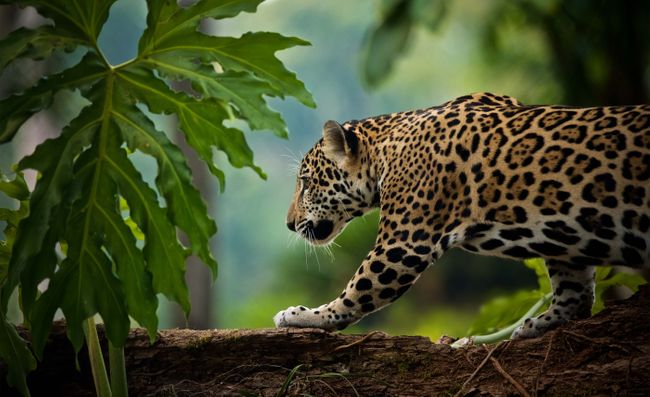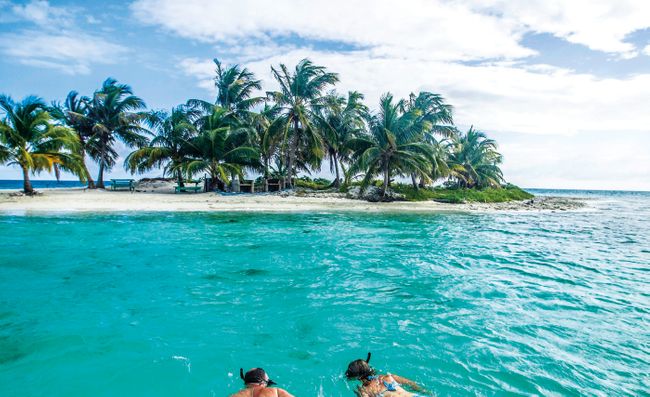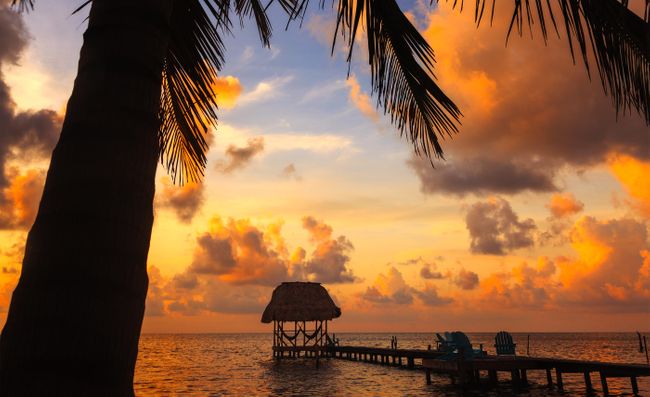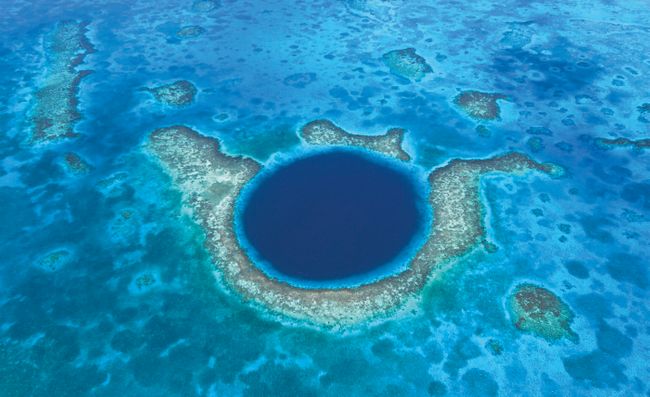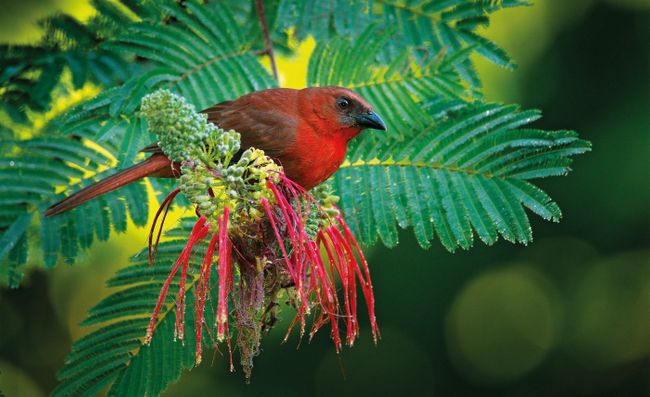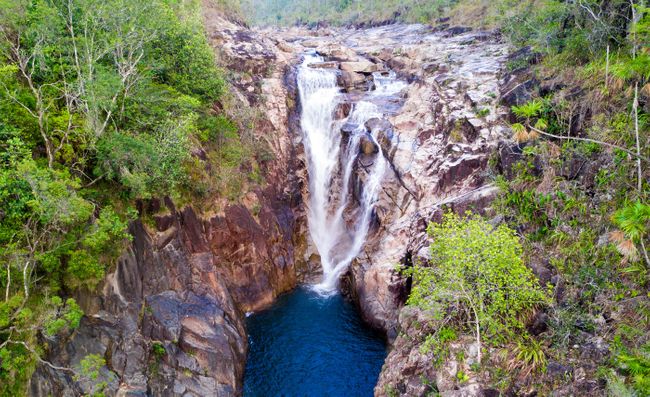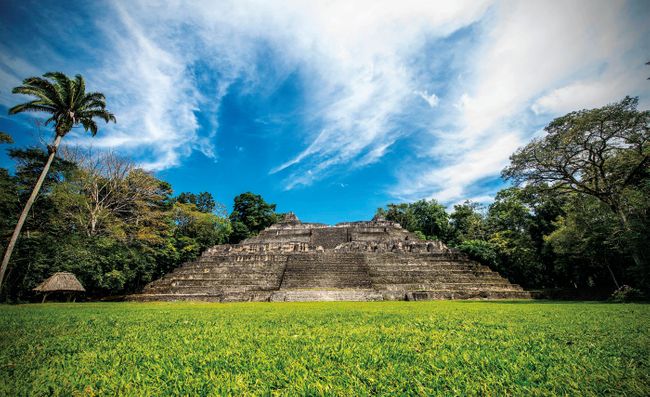1. Feel truly festive in Ethiopia
Celebrate Genna in Ethiopia (Shutterstock)
What? Swap Santa Claus for something quite different next January. Genna is Ethiopian Christmas, when white-robed pilgrims flock to churches and spiritual music fills the air. Witnessing these celebrations can be combined with Timkat (Epiphany), 12 days later: head to ancient Axum, where the original Ark of the Covenant is believed to be kept, to watch costumed high priests parade with a replica, while the city erupts in dancing, chanting and song.
The trip: A 16-day Festivals of Ethiopia small-group trip with Travel The Unknown costs from £3,795pp, excluding flights. When you subscribe to Wanderlust, you get a £50 voucher which you can use on this trip.
Suggested by: Rahul Aggarwal, Travel The Unknown
2. Do it all in a day in South Africa
Admire the historic iSimangaliso Wetland Park (Shutterstock)
What? There might be better-known national parks in South Africa, but few can rival iSimangaliso Wetland Park (South Africa’s first World Heritage site) for sheer diversity. In this lush, coastal reserve you can safari-drive to spot rhino, elephant, buffalo, antelope and more before picnicking on the sweeping golden sands of Cape Vidal beach, swimming in the surf and (during the June to December season) scanning for humpbacks migrating by offshore.
The trip: A 14-day South Africa: Off the Beaten Track tailor-made trip with TravelLocal costs from £1,780pp, excluding flights
Suggested by: Tom Stapleton, TravelLocal
3. Hop the Dodecanese, Greece
Hop the Dodecanese for a fun island experience (Shutterstock)
What? Many Greece-lovers centre on the Cyclades, heads turned by Santorini. But head a little further east and you can find the same island-hopping fun in the lesser-visited Dodecanese. Use the main (and admittedly busy) islands of Kos and Rhodes as jumping-off points for exploring this cluster’s quieter outposts such as Symi, with its pretty port town, the quiet coves and crumbling Crusader castles of Leros and the pristine beaches of undeveloped Lipsi.
The trip: A seven-night Island hopping in the Dodecanese tailor-made trip with Sunvil costs from £750pp, including flights. When you subscribe to Wanderlust, you get a £50 voucher which you can use on this trip.
Suggested by: Rachel Jelley, Sunvil
4. W-walk the walk in Chile
Chile’s Torres del Paine is unmatched (Shutterstock)
What? Patagonia is the very definition of rugged wilderness, and exploring here is always an adventure. But it doesn’t have to be beardy-explorer tough: the W Trek, an exhilarating zig-zag that showcases the most iconic landscapes of Torres del Paine NP, remains at low altitude and is doable by anyone with a reasonable level of fitness, a willingness to camp amid lakes, glaciers and peaks, and a love of the truly great outdoors.
The trip: A 23-day Backroads of Patagonia small-group trip with Dragoman costs from £2,300pp, excluding flights
Suggested by: Charlie Hopkinson, Dragoman
5. Sip tea in the Golden Triangle, Thailand
Explore Thailand’s far north (Shutterstock)
What? The mountains of Thailand’s far north were once part of the ‘Golden Triangle’, notorious for war lords and drug caravans. Today, however, they’re better-known for their exceptional tea. Formosa oolong has replaced opium as the crop of choice; visit plantations to partake in tea-tasting ceremonies, marvel at the landscapes and meet the local people, from the traditional hilltribes to descendants of Chinese soldiers who fled here after the civil war.
The trip: A 14-day Hidden Thailand small-group trip with All Points East costs from £1,150pp, excluding flights. When you subscribe to Wanderlust, you get a £50 voucher which you can use on this trip.
Suggested by: Lesley Schofield, All Points East
6. Trek to the wildest waterfall in Peru
Gocta Falls, Peru’s wild waterfall (Peru Safari)
What? Relatively few travellers choose to visit the north of Peru. Even fewer get around by self-drive 4WD. And fewer still hike out from the jungle village of Cocachimba at dawn, in order to stand below 780m Gocta Falls, one of the world’s highest, most magnificent and most remote cascades. It’s all worth it though, for wild adventures and the chance to traverse the pristine Chachapoyas cloud forest, which is alive with rare toucans, butterflies and hummingbirds.
The trip: A 16-night Cloud Warrior Tracks small-group trip with Peru Safari costs from £3,980pp, excluding flights. When you subscribe to Wanderlust, you get a £50 voucher which you can use on this trip.
Suggested by: Paul Boardman, Peru Safari
7. Take pictures of polar bears in Arctic Russia
Polar bears roam on Franz Josef Land (John Bozinov/Poseidon Expeditions)
What? Franz Josef Land is one of the far north’s most inaccessible reaches, an unpeopled wilderness teeming with life, from beluga and bowhead whales to harp seals and huge haul-outs of walrus. It’s also an excellent habitat for polar bears, many of which choose to den here. Exploring the surrounding sea ice on an expedition vessel, with an expert naturalist, a pro photographer and 24-hour daylight, provides the perfect opportunity to capture these creatures on camera.
The trip: A 13-day Unexplored Frontier cruise with Poseidon Expeditions costs from US$8,636pp, [£6,850] excluding flights.
Suggested by: Alex Prokopyeva, Poseidon Expeditions
8. Make the ultimate road trip in California, USA
Dip down into Death Valley on your California road trip (Shutterstock)
What? Self-drives don’t get more glamorous: to explore the Golden State in your own set of wheels is to experience motoring at its most magnificent. Feel the freedom of the open road as you cruise alongside Pacific-slapped shores, pull over at sun-soaked vineyards, hairpin amid the High Sierra, dip down into Death Valley and mooch around like a superstar in the glitzy cities. Pore over a California road map with an expert to plan the drive that best suits you.
The trip: A 21-day California Explored tailor-made trip with Audley Travel costs from £3,835pp, including flights. When you subscribe to Wanderlust, you get a £50 voucher which you can use on this trip.
Suggested by: Adam Kemp, Audley Travel
9. Kayak with dolphins in Cambodia
An irrawaddy dolphin in the Mekong River (Shutterstock)
What? Paddle through a rarely visited region of northern Cambodia to see river dolphins – without the noise of tourist boats. The pools of Kampi are home to the largest single concentration of these rare creatures on the river. Set in one of Asia’s most family-friendly destinations, you can combine dolphin paddles with gibbon tracking, elephant encounters and forest zip-lining too.
The trip: An 18-day Family Adventure in Cambodia tailor-made trip with Bamboo Travel costs from £3,150pp/£2,975pp adult/child, including flights. When you subscribe to Wanderlust, you get a £50 voucher which you can use on this trip.
Suggested by: Tim Milner, Bamboo Travel
10. Observe from igloos in Arctic Finland
Views from an igloo in the Finnish Arctic (Ilkka Vayrynen/Best Served Scandinavia)
What? Watch the dance of the aurora borealis from the comfort of your bed. Stay in a heated, glass-roofed igloo in Levi, high in Finnish Lapland, and you can (with luck) spend all night gazing up at this spectacle. Days can be filled with snowmobiling and dog-sledding adventures, or ski-swooshing down alpine slopes.
The trip: A four-night Glass Igloos & Northern Lights tailor-made trip with Best Served Scandinavia costs from £925pp, including flights.
Suggested by: David Ward, Best Served Scandinavia
11. Sleep on the reef in Queensland, Australia
The Great Barrier Reef in Queensland, Australia (Shutterstock)
What? Enjoy a beaut of a day on the Great Barrier Reef – scanning for humpbacks, snorkelling vibrant coral, cruising in a semi-submarine – and then top it off with a night spent sleeping there: 39 nautical miles offshore, on a moored pontoon, are a handful of alfresco reefbeds. Raise a beer as the sun sets, gaze up at the stars, and drift off to the lap of waves.
The trip: A two-day Reefsleep Experience with Trailfinders costs from £362pp, excluding flights (can be added to any East Coast Australia itinerary).
Suggested by: Anna Trim, Trailfinders
12. Try a glass of toddy in Kerala, India
Experience all Kerala has to offer (Shutterstock)
What? Kerala’s backwaters are a languid expanse of rice paddies, birds and traditional village life. And there’s no better way of tasting that life that popping to a toddy shop. Hop into a canoe in the warm light of late afternoon to pay a visit to one of these basic bars; learn about the history of this mild palm wine, and try a few samples as the sun goes down.
The trip: An eight-day Essence of Kerala small-group trip with TransIndus costs from £835pp, excluding flight.
Suggested by: Jess Millett, TransIndus
13. Live with the locals in Nepal
What? The best trips are those when you don’t simply pass through, you fully engage. And a great way to do that, and ensure you’re supporting local communities, is to spend quality time with the people. Enjoy a few days with a family in the historic old Nepalese town of Panauti and you can get hands on in the kitchen, help prepare a feast, join a volleyball game, visit the nearby monasteries and become a real part of the household.
The trip: A seven-day Local Living Nepal small-group trip with G Adventures costs from £429pp, excluding flights
Suggested by: Leah Whitfield, G Adventures
14. Hear glaciers heave in Argentina
The goliath Perito Moreno Glacier in Argentina (Shutterstock)
What? The Perito Moreno is a goliath among glaciers: 30km long and, unlike most such masses of ice, still growing. It’s breathtaking to gaze at this sparkling blue-white wall from one of the viewing platforms; to hear the mass of ice creak, groan, calve and crash into the lagoon below is chilling indeed. This is the highlight of Los Glaciares National Park, and a must-stop on an overland tour of Patagonia.
The trip: A 10-day Patagonia Highlights small-group trip with Tucan Travel costs from £964pp (plus US$420 local payment), excluding flights. When you subscribe to Wanderlust, you get a £50 voucher which you can use on this trip.
Suggested by: Emma Nelson, Tucan Travel
15. Dine like a maharaja in India
Rawla Narlai (Cox & Kings)
What? Picture the scene: an ancient stone baori (stepwell), set within a mango grove and illuminated by the flicker of a hundred oil lamps – your destination for dinner. The stepwell is in the grounds of the Rawla Narlai, a former royal hunting lodge, and now a serene stop-off between dazzling Udaipur and Jodhpur. Stay a few nights to explore the surrounds: maybe a 4WD safari to search for leopards or a guided hike in the hills.
The trip: A 16-day Passage Through Rajasthan small-group trip with Cox & Kings costs from £2,595pp, including flights.
Suggested by: Jemma Laing, Cox & Kings
16. Stroll with samurai in Honshu, Japan
Nakasendo in Honshu, Japan (David Lovejoy/InsideJapan Tours)
What? Walk in the wake of bygone warriors: the Nakasendo was once a vital road linking Kyoto with Edo (now Tokyo), travelled by lords, merchants and samurai. Some scenic stretches of the trail remain, where it’s possible to hike via traditional farmhouses, tea plantations, larch forests, bamboo groves, mountain shrines and atmospheric post towns. Tread the very same stone slabs and get a real taste of ancient Japan, on foot.
The trip: An 11-night Walking the Nakasendo & Beyond small-group trip with InsideJapan Tours costs from £2,250pp, excluding flights
Suggested by: James Mundy, InsideJapan Tours
17. Live like a llanero in Colombia
Experience life like a llanero in Colombia (Juan Espinel/Imagine Travel)
What? Stretching across Colombia’s eastern plains, where animals far outnumber people, Los Llanos is home to one of the last authentic cowboy cultures in the Americas. Immerse yourself in this enduring lifestyle by riding out with the hardy llaneros: hack across the grasslands on horseback (looking out for an array of birds), try your hand at the lasso, learn traditional cattle-herding songs and gather around the campfire for joropo dancing and a cowboy feast.
The trip: A 15-night Wildlife of Colombia tailor-made trip with Imagine Travel costs from £4,700pp, including flights.
Suggested by: Suzie Slemeck, Imagine Travel
18. Peer into the Pope’s garden in Italy
A view of the Pope’s garden from above (Shutterstock)
What? Founded in the 13th century, the 23-hectare Vatican Gardens – a magical, manicured enclave of flowerbeds, fountains, winding paths and shady grottoes – comprises more than half of the world’s smallest country. With a special-access ticket you can tour them with an expert guide, discover their secret corners (such as Pope Francis’ favourite prayer spot) and drink in their cool, quiet calm before plunging back into the historic hubbub of Rome, just beyond.
The trip: A four-night Rome tailor-made trip with Abercrombie & Kent costs from £1,500pp, including flights.
Suggested by: James Treacy, Abercrombie & Kent
19. Be awed by eagle hunters in Kyrgyzstan
An eagle hunter in Kyrgyzstan (Shutterstock)
What? The nomads of the Central Asian steppe have long been training golden eagles; to watch these horsemen hunt with their massive, majestic birds, before a backdrop of soaring mountains, is like travelling back millennia. This spectacle is just one highlight of a Silk Road odyssey that traces the region’s ancient trading routes, from Kyrgyzstan’s carpet weavers and caravanserais to Uzbekistan’s bustling bazaars and resplendent cities.
The trip: A 22-day Road to Samarkand small-group trip with Wendy Wu Tours costs from £4,690pp, including flights. When you subscribe to Wanderlust, you get a £50 voucher which you can use on this trip.
Suggested by: Wendy Wu, Wendy Wu Tours
20. Eye aurora in autumn in Arctic Finland
Want to spot the Northern Lights? (Matt Robinson/Aurora Zone)
What? Many assume the Arctic is most dazzling during snow-slathered winter. But visit in autumn and you get two lots of colour: the Finnish ruska – turning of the leaves – bathes the wilderness in vibrant orange and gold, while, with nights darkening once more, the northern lights are more easily seen. Take a fall trip to the village of Saariselkä to sleep in a glass-roofed cabin and, perhaps, see the aurora reflected in as-yet unfrozen lakes.
The trip: A three-night Saariselkä: Autumn Lights tailor-made trip with The Aurora Zone costs from £625pp, excluding flights.
Suggested by: Julia Farish, The Aurora Zone
21. Go overland to Kathmandu in Europe & Asia
The ultimate overland trail to Nepal (Shutterstock)
What? Modern-day travellers can recreate the classic hippy trail, travelling from London to Kathmandu without a plane in sight. Board the train at St Pancras station, trundle across the continent – stopping at Brussels, Berlin, Warsaw, Kiev and Moscow along the way – before swapping to a truck in St Petersburg and heading off across the Caucasus, the ’Stans and the Tibetan plateau, bound for the Himalaya. Slow, big travel at its best.
The trip: A 98-day Exploratory London to Kathmandu: Ultimate Asia Overland trip with Oasis Overland costs from £5,875pp (plus $2,250 local payment), excluding flights. When you subscribe to Wanderlust, you get a £50 voucher which you can use on this trip.
Suggested by: Jamie May, Oasis Overland
22. See four islands on foot in the Azores
Explore the Azores, a mid-Atlantic archipelago (Shutterstock)
What? Time seems to move more slowly on Portugal’s mid-Atlantic archipelago, which makes walk-pace the perfect speed at which to explore. In a fortnight you can amble around four different islands, following trails amid dormant volcanoes, crater lakes and hot springs, via peaceful basalt beaches, vineyards tucked into lava flows and eruptions of vibrant hydrangeas. Don’t miss tucking into a traditional Cozido das Furnas, a feast cooked underground using geothermal heat.
The trip: A 14-night Charm of The Azores small-group trip with Ramblers Walking Holidays costs from £2,649, including flights.
Suggested by: Gemma Chase, Ramblers Walking Holidays
23. Hike with huskies in Arctic Sweden
Dog sledding with huskies in Arctic Sweden (Shutterstock)
What? There’s no need for snow to feel the thrill of travel by husky power. Head out on a summer or autumn walk in Swedish Lapland with local mushers, with your own pack attached to you. As the dogs gently pull you along, learn about the mushing lifestyle, identify wildlife tracks, breathe in the fragrant forest and stop for a traditional fika coffee-and-cake break with unbeatable views.
The trip: A seven-night Local Lives: Arctic Sweden tailor-made trip with Discover the World costs from £2,992pp, including flights. When you subscribe to Wanderlust, you get a £50 voucher which you can use on this trip.
Suggested by: Georgina Hancock, Discover the World
24. Opt for island life in Croatia
Explore Croatia’s lesser-known islands (Shutterstock)
What? A designated nature park, the tiny Adriatic island of Lastovo was closed to foreigners during the Yugoslav years, and still sees few tourists. Discover how the locals live by spending a day at sea with a fisherman, visiting vineyards, sampling the local cheese and cycling, swimming and sailing around the secluded bays.
The trip: A five-day Croatia Retreat: Lastovo small-group trip with Intrepid Travel costs from £750pp, excluding flights.
Suggested by: Nadia Walford, Intrepid Travel
25. Camp on ice in Antarctica
Explore the White Continent (Shutterstock)
What? To feel like a proper polar explorer, spend a night under canvas on the White Continent. From the ice you can easily imagine how the pioneers felt: tug your kit to your campsite by sledge, watch the play of light on the mountains as you huddle into a cosy sleeping bag and then listen to the shifting of ice and the deafening silence.
The trip: A 33-day Semi-circumnavigation of Antarctica: from Ushuaia to Lyttelton with Hapag-Lloyd Cruises costs from £23,850pp, excluding international flights.
Suggested by: Silja Matthiesen, Hapag-Lloyd Cruises
26. Glamp on a tropical isle in Belize
Glamp and get active in beautiful Belize (Belize Tourism Board)
What? Marooned off the mainland, Glover’s Reef Atoll is a privately owned and protected marine park with its own white sand, coconut palms and pristine coral, and a few safari-style tents right at the water’s edge. Step out of bed and straight onto the beach, to kayak and stand-up paddle amid the mangroves or swim and snorkel in the crystal-clear lagoon, looking for turtles and tropical fish.
The trip: An 11-day Active Belize tailor-made trip with Journey Latin America costs from £2,932pp, excluding flights. When you subscribe to Wanderlust, you get a £50 voucher which you can use on this trip.
Suggested by: Jenny Powles, Journey Latin America
27. Enjoy life on the lake in Finland
The idyllic Hotel & Spa Resort Järvisydän on Saimaa (Johannes Wilenius)
What? Think Huck Finn living, Finnish style… On Lake Saimaa, Finland’s largest lake, you can decamp to a stylish houseboat. Spend carefree days stand-up paddleboarding along the shores, steaming in your private sauna, exploring by wooden boat and looking out for rare ringed seals. For the most splendid isolation, recruit a captain to sail your whole houseboat across to a secluded island and spend a night moored even further away from it all.
The trip: A three-night Houseboat Adventure on Lake Saimaa tailor-made trip with Magnetic North Travel costs from £1,395pp, excluding flights.
Suggested by: Laura Greenman, Magnetic North Travel
28. Drink wine with a winner in Georgia
Enjoy a Wanderlust mag-approved itinerary (Dreamstime)
What? Georgia is widely considered the birthplace of wine – viticulture has been practised here since 6,000 BC. And there’s no region more delicious for tasting than Kakheti, where traditional cellars and vineyards sit amid monasteries and mountains. The best way to find the best stories and producers is to travel with an expert – in this case, Wanderlust World Guide Awards winner Dario Ghirlanda, who’s devised an exclusive route for Wanderlust readers around his favourite Georgian spots, including the beautiful mountains of the Tusheti region.
The trip: An 11-day Wanderlust Journeys: Discover Georgia small-group trip with Wild Frontiers costs from £1,995pp, excluding flights.
Suggested by: Michael Pullman, Wild Frontiers
29. Go offbeat for aardvarks in Botswana
An aardwolf in Botswana (Dani Free/Wildlife Worldwide)
What? A good guide’ll work their socks off to find the creatures you most want to spot. However, mention ‘aardvark’ and you’ll be met with a shake of the head… Such species gain near mythical status on reserves with high predator densities. But if you head to Botswana’s less-visited parks, on a mobile camping safari, it’s possible to see these elusive animals, as well as other oddities such as brown hyena and aardwolf.
The trip: A 12-day Botswana’s Rare Mammals small-group trip with Wildlife Worldwide costs from £4,995pp, including flights.
Suggested by: Dani Free, Wildlife Worldwide
30. Break out in the Balkans in Serbia & Montenegro
The Bjelasica Mountains in northern Montenegro (Shutterstock)
What? Despite being so scenically and culturally rich, the peaks of Montenegro and Serbia still remain off the tourist trail. You don’t have to be a tough trekker, either: hikes in the Uvac canyon (where griffon vultures might be seen) and the shepherd-roamed pastures of the Bjelasica Mountains provide high drama without high exertion. An overnight monastery stay offers insight into Serbian Orthodox life, too.
The trip: A nine-day Through the Heart of the Balkans small-group trip with KE Adventure costs from £945pp, excluding flights. When you subscribe to Wanderlust, you get a £50 voucher which you can use on this trip.
Suggested by: Alexandra Greenwood, KE Adventure
31. Meet locals on the Mekong in Vietnam
Enjoy slow rides along the Mekong Delta (Shutterstock)
What? Ride a slow boat along the waterways of the Mekong Delta and you’ll see all of life glide by: this is the ‘rice bowl’ of Vietnam, lined with orchards, paddies and plantations, busy with floating markets, fishermen and sampan boats. Spending the night on a quiet island here with a local family gives you the chance to sample regional produce – from fresh fruit and sticky honey to coconut candy – as well as an introduction to warm Delta hospitality.
The trip: A 16-day Vietnam Adventure small-group trip with Exodus Travels costs from £1,949pp, including flights. When you subscribe to Wanderlust, you get a £50 voucher which you can use on this trip.
Suggested by: Hayley Georgiou, Exodus Travels
32. Plot the ultimate expedition in Antarctica
South Georgia’s colony of penguins (Shutterstock)
What? Why be content with just the White Continent? Get more from your Antarctic voyage by sailing the longer way down. Call in at the animal-abundant, history-soaked Falkland Islands. Then spend time on South Georgia, the ‘Galápagos of the Poles’, where there are seabirds and penguins in their millions. To turn the trip up to 11, add unique adventures: hikes in Shackleton’s footsteps, kayaking amid bergs and seals, a night camping on the Antarctic ice.
The trip: A 23-day Antarctica, Falklands, South Georgia: Ultimate Expedition cruise with Hurtigruten costs from £9,642pp, excluding flights.
Suggested by: Jenni Lai, Hurtigruten
33. Drive into the wilds of Chile
A section of the Carretera Austral, Chile (Shutterstock)
What? The Carretera Austral is a king among roads. Stretching for 1,200km from Puerto Montt to Villa O’Higgins, it cuts through rural Patagonia’s forests, mountains, glacial lakes and raging rivers, providing the wildest of drives. Hire your own wheels to go at your own pace and stop when you fancy; maybe concentrate on a section, so you have enough time to truly explore areas such as Pumalín (Chile’s largest private reserve) and General Carrera, the country’s biggest lake.
The trip: A 13-day Self-Drive the Carretera Austral tailor-made trip with Latin Routes costs from £2,499pp, excluding flights.
Suggested by: Laura Radford, Latin Routes
34. Track rhino on foot in Namibia
Rhino in Namibia (Llama Travel)
What? Black rhinos are critically endangered – but a sizeable number of them remain in ancient, arid Damaraland (one of the least populated parts of a lovely and populated country), so chances of finding them here are relatively high. Head out in a 4WD at dawn with an expert tracker; once rhinos have been spotted, hop out for the spine-tingling thrill of following them on foot, staying downwind and walking in silence as these great survivors roam the rugged wilds.
The trip: A 15-day Wildlife & Wilderness of Namibia small-group trip with Llama Travel costs from £2,699pp including flights.
Suggested by: Luca Newbold, Llama Travel
35. Meet the tribe in Borneo
A view over Batang Ai, Borneo (Shutterstock)
What? The dense tropical rainforest of Batang Ai is home to one of the oldest Iban settlements in Sarawak, and visits here are eye-openers on the cultural life of this wild, jungly isle. Journey along the emerald-hued Engkari River on a longtail boat to reach a stilted Mengkak longhouse, tucked amid the trees, and spend time with the local tribe: watch people go about their daily lives, see them use their blowpipes, share a cup of rice wine or two.
The trip: A seven-night Best of Borneo tailor-made trip with Flight Centre costs from £2,919pp, including flights.
Suggested by: Alexandra Cronin, Flight Centre
36. Be sociable on the Silk Road in Uzbekistan
Join our editor-in-chief Lyn in Samarkand and beyond (Shutterstock)
What? Following the Silk Road through Uzbekistan means marvelling at ancient cities – Samarkand, Bukhara, Khiva. But it’s also about the people: meeting silk-paper makers, spice masters, market vendors, sheep farmers and rural villagers continuing their traditional ways of life amid the Uzbek lakes and mountains. Do all this with a group of like-minded travellers – Wanderlust founder Lyn Hughes is accompanying this exclusive trip which is sure to be very sociable and lots of fun.
The trip: A 10-day Discover Uzbekistan with Lyn Hughes small-group trip costs from £1,950pp, excluding flights.
Suggested by: Lyn Hughes, Wanderlust Journeys
37. Canoe into the Costa Rican jungle
The Costa Rican jungle awaits (Shutterstock)
What? Delve into more offbeat Costa Rica aboard a bamboo boat: a wild canoe ride into the forest will take you to the Bribri, a community living near the Panama border who have been living the same way for generations. Stay at the village in a simple palm-thatch cabaña and join the locals on walks through the banana plantations and swims in the river; also, learn to identify medicinal plants and make chocolate and share a traditional feast.
The trip: A 17-day Costa Rica tailor-made trip with Rickshaw Travel costs from £1,998pp, excluding flights.
Suggested by: Emily Munford, Rickshaw Travel
38. Scale a secret summit in Myanmar (Burma)
The Buddha statue atop Nat Ma Taung, Myanmar (Shutterstock)
What? Nat Ma Taung (aka Mount Victoria) is a tantalising trekking prospect: an ‘ultra-prominent’ peak, soaring over 3,000m above Myanmar’s little-visited Chin State, conquered by few people. It’s an adventure just to get there, bouncing cross-country from Bagan, stopping off at Chin villages en route. The climb itself, in bird and botany-rich Nat Ma Taung National Park, is short, steep but spectacular; from the top, gaze out over lush montane forest to distant mountains.
The trip: A 15-day trip to Myanmar (Burma) including Nat Ma Taung starts from £2,911pp, excluding flights.
Suggested by: David Leck, Selective Asia PR
P.S. When booking, don’t forget to tell the tour op you saw the trip in Wanderlust mag
Read more:























































